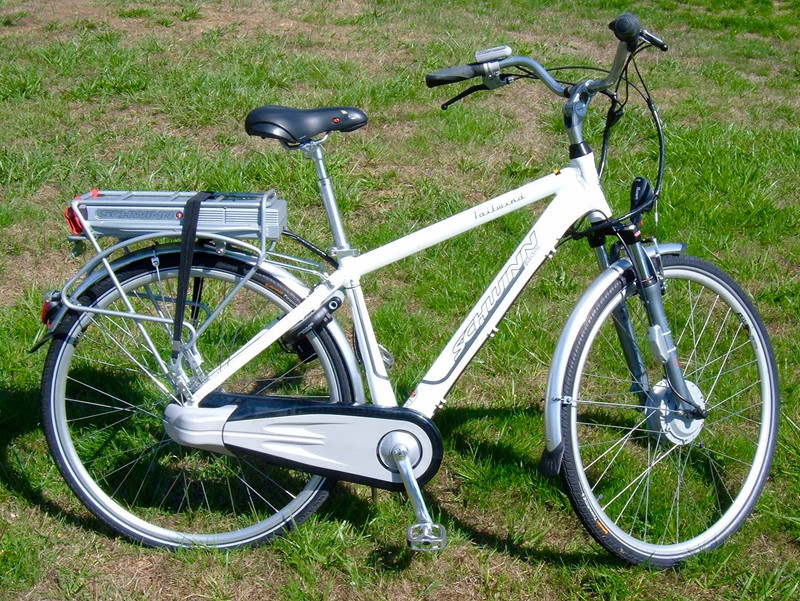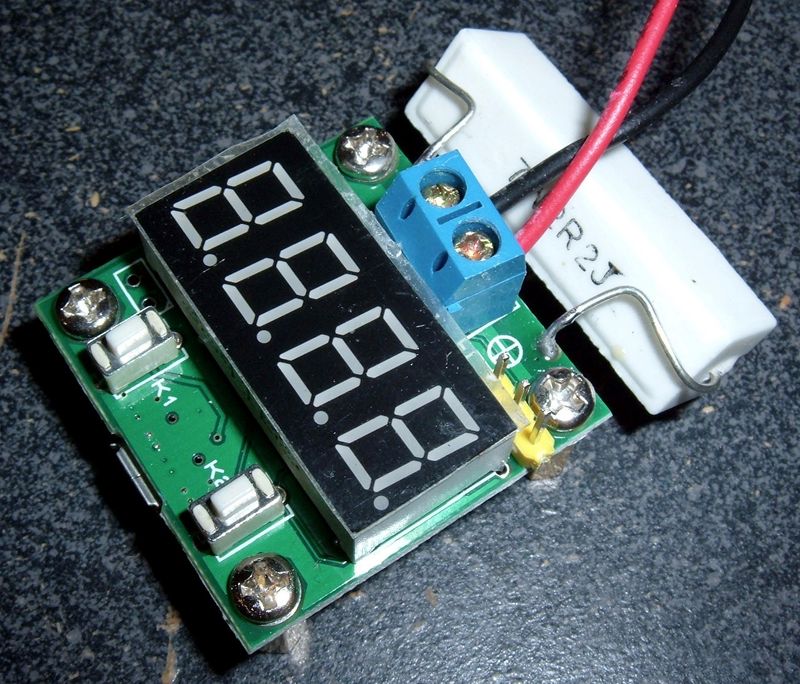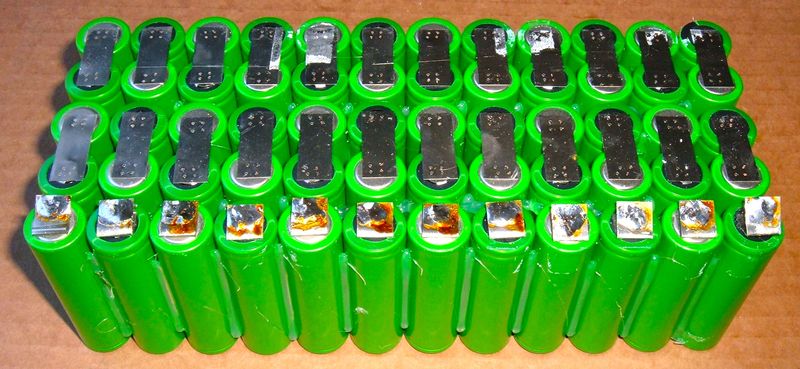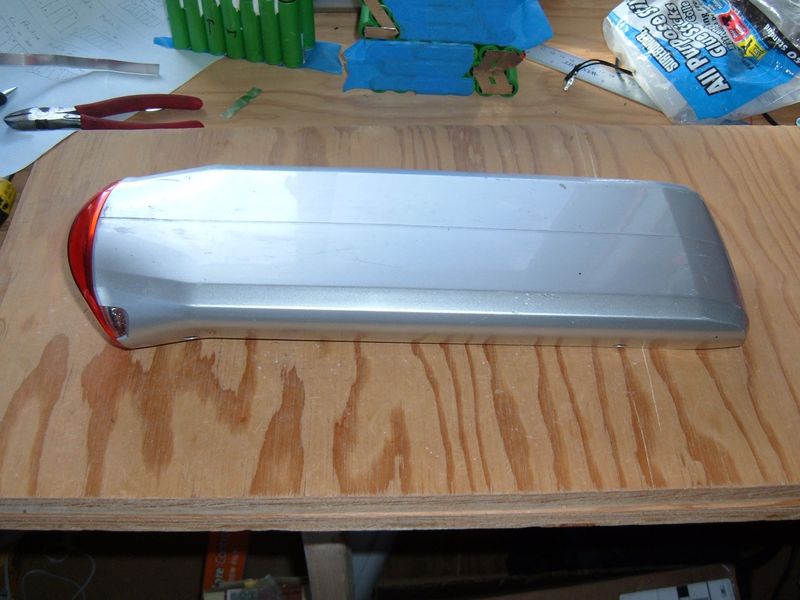The Schwinn Tailwind. The name sounds powerful, fast, and sleek! It sounds like the type of thing Snoopy might fly into combat against the Red Baron.
It’s not a half bad looking bike, either! But… is it any good?
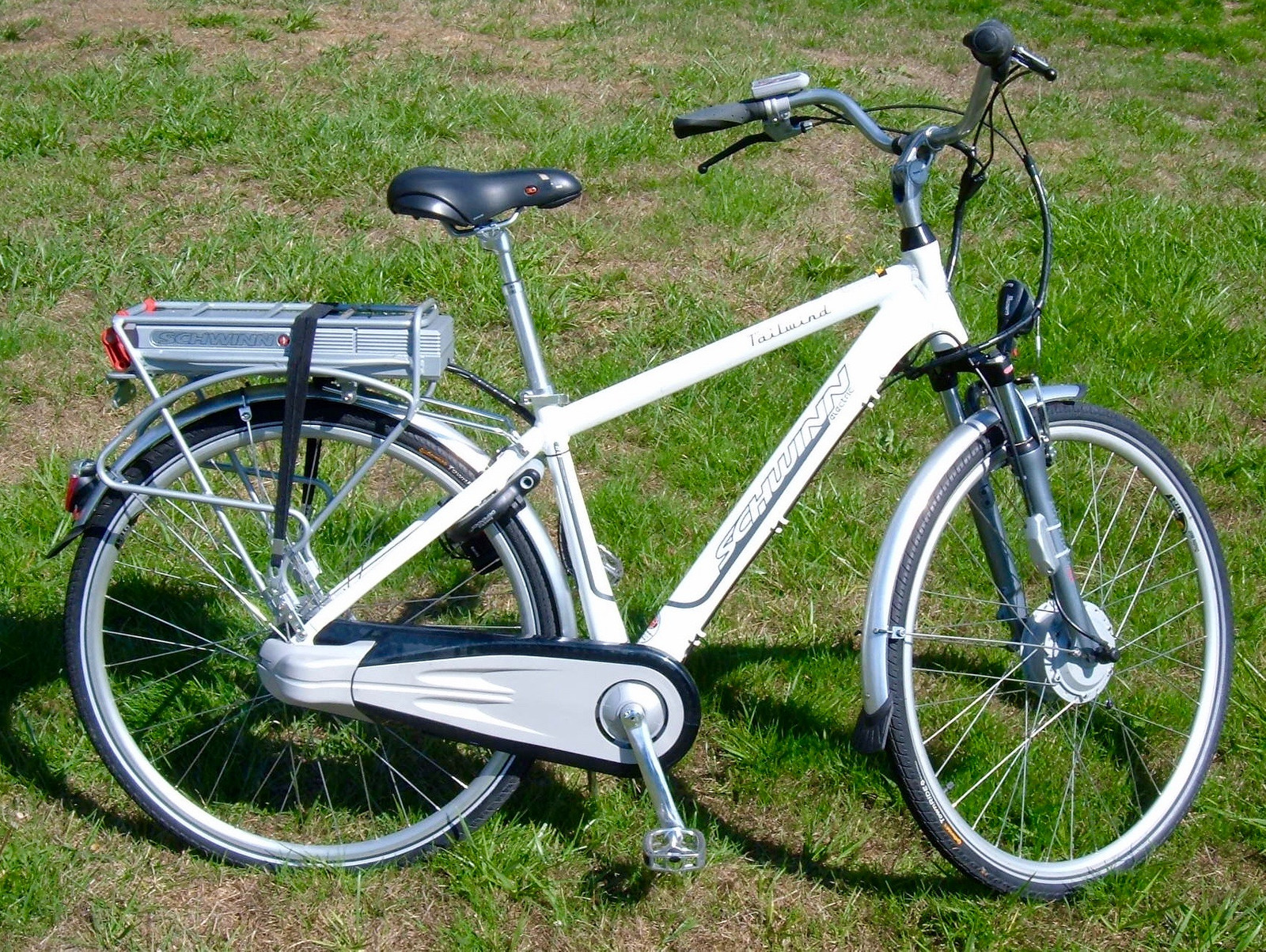
As you’ve probably guessed if you read this blog frequently, you’ll have to read on to find out!
Some History
The Tailwind was announced in late 2008, and came out in early 2009, retailing for a rather high (at the time) price of $3,199. It promised all sorts of interesting features (well, mostly, it was an electric bike by a major name in bicycles), came with an exotic Toshiba SCiB battery with super fast charging, and very successfully got the attention of many tech and bicycle websites, who happily covered this amazing new development in transportation. It also managed to get coverage in a lot of business-focused magazines - which is unusual for an electric bike. I’ll come back to this later.
Surprisingly few websites seem to have actually gotten around to riding the thing when it came out. Most of the reviews seem to be “paper reviews,” with a few reviews written by people who had never ridden an electric bike before, rode it briefly, and came away impressed (not a high bar).
It doesn’t seem to have been a very popular bicycle. Actual rider reports are few and far between. As is often the case for expensive, weird, new things that don’t have a well defined use case, within a few short years, the bikes were being closed out for under $1000. They were down to $700 in 2013, and can now be found for $350 with bad batteries on eBay.
Of course, as some of my regular readers might know, I bought one. With a bad battery. And bypassed the BMS so I could actually ride it. And review it.
This is a 6-7 year old bike, and my particular example has been ridden a good bit, so it’s not in perfect condition. But I can still review it and provide some feedback on it for people who otherwise wouldn’t be able to find anything recent. Or, at least, get some good detail photos of parts otherwise not covered.
Design Features Review
I’m just going to start at the front of the bike and work back. There’s a lot of weirdness to cover. Some of it is good, some of it less so.
Fundamentally, this bike seems like a bunch of parts bolted and ziptied (yes… literally ziptied) onto an otherwise standard Schwinn city bike frame.
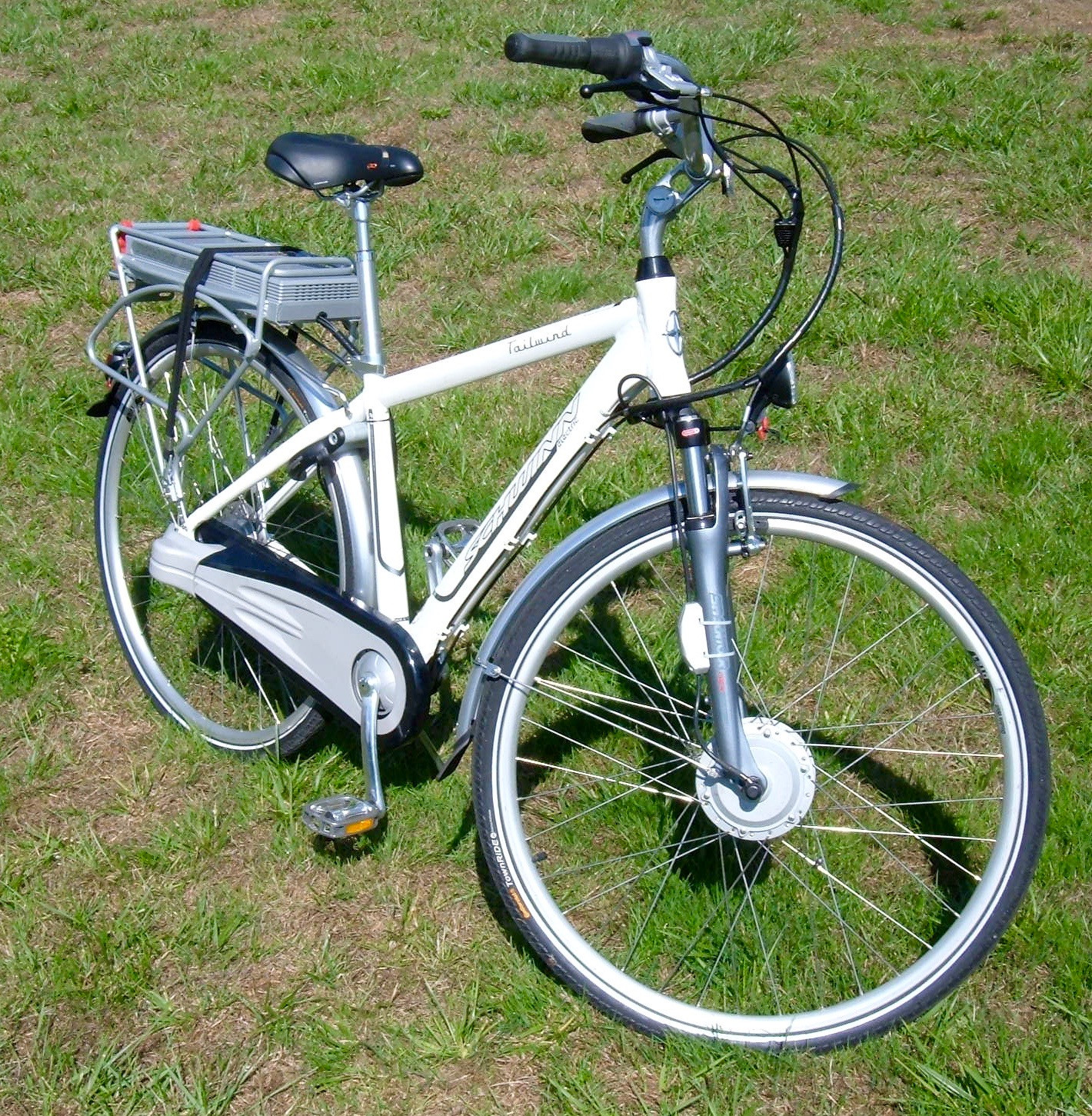
In fact, the parts are bolted onto on the Schwinn Urban Tuned City Geometry with N’Litened 6000 Series Aluminum. If you care about such things.
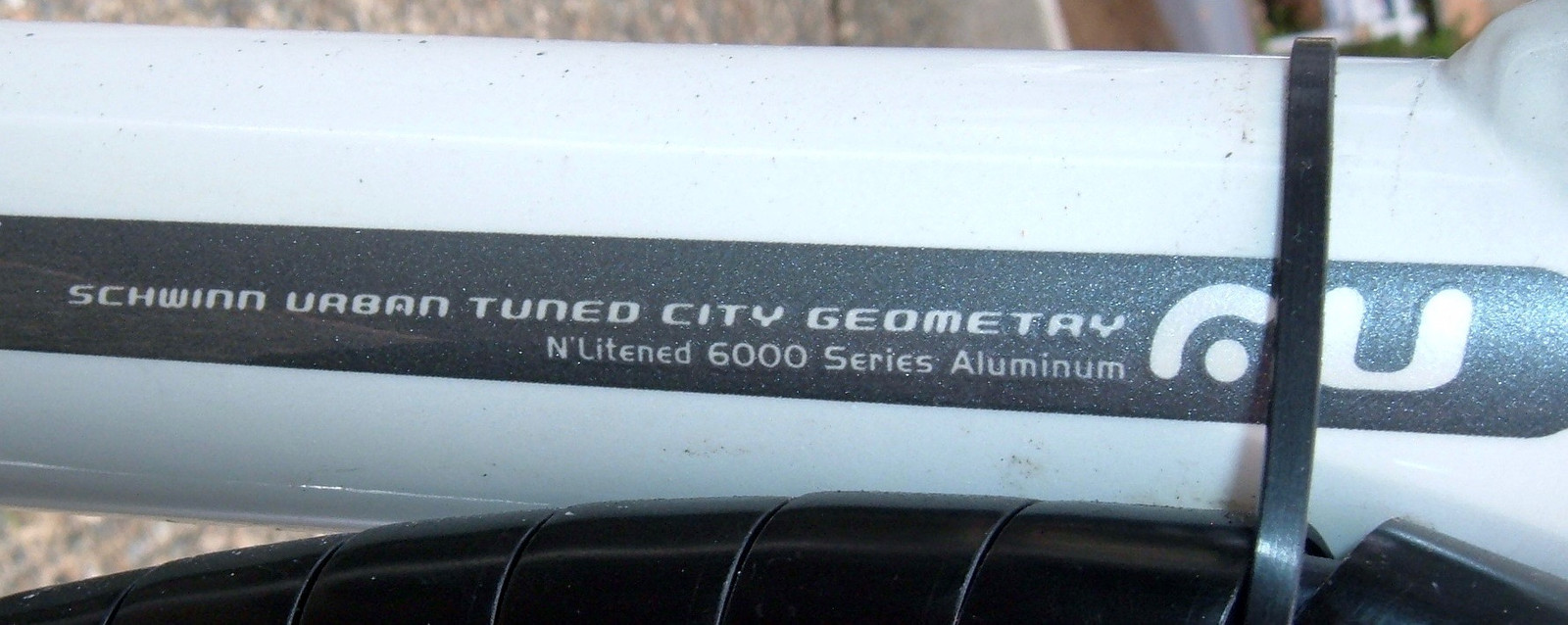
Front Wheel, Forks, and Motor
This bike is powered by a small front hub motor. It’s a brushless geared motor (excellent!), and supposedly rated for 180W sustained/250W peak output, though I haven’t stuck an ammeter on it to verify the power consumption (and, sadly, I lack an ebike dyno). It claims 220W on the actual motor. So, it’s something in that range. The controller for it is zip tied on a fork tube. Count the zip ties, for fun. This bike is crawling with them.
As is standard for geared ebike motors, it has no significant rolling resistance when the wheel is turning faster than the motor. It’s not a bad choice for a small assist - it’s not going to cause any drag when you’re not using the assist, and it’s fairly light. There’s no regen, though. As this bike isn’t at all suited to hills, this isn’t a problem at all.
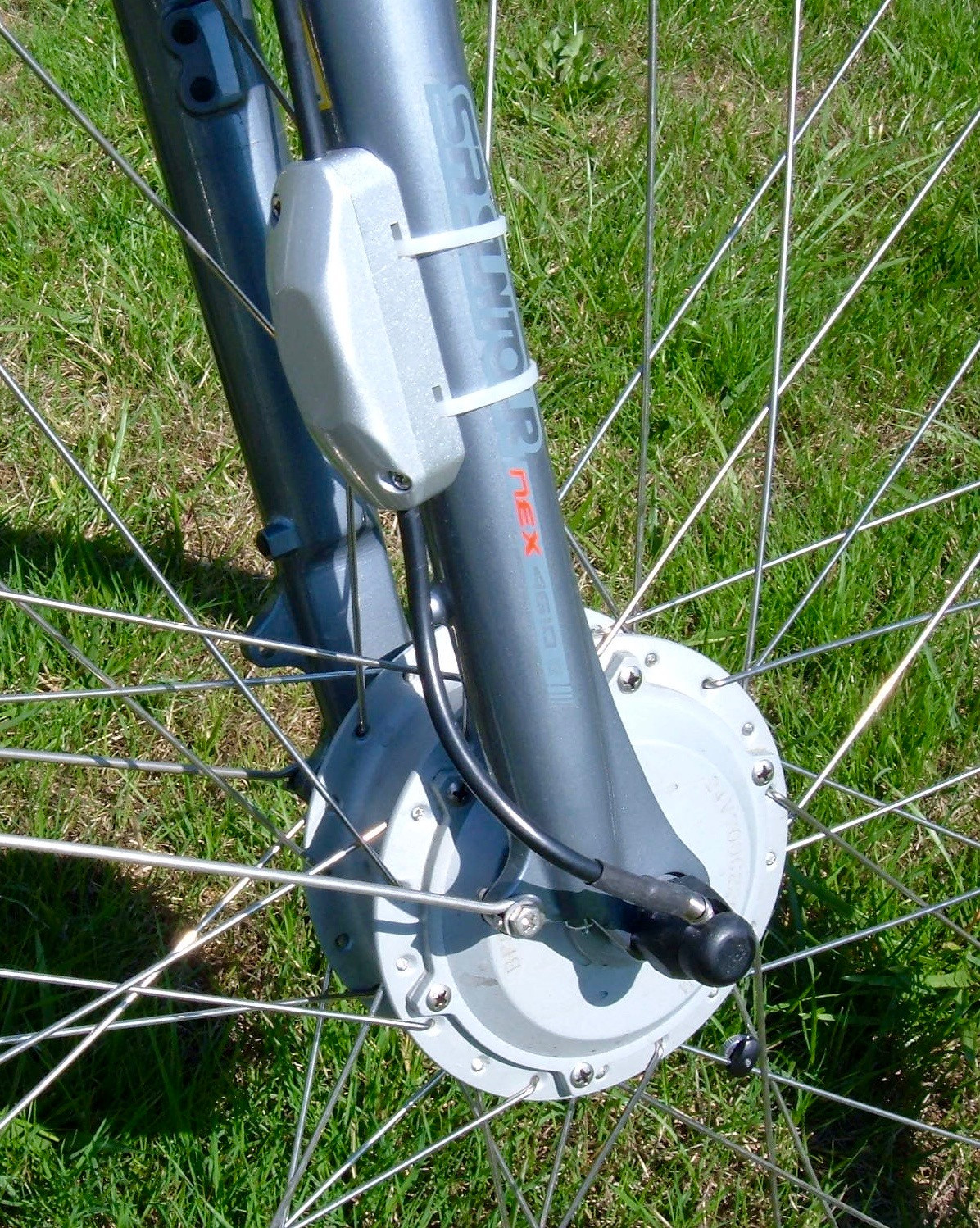
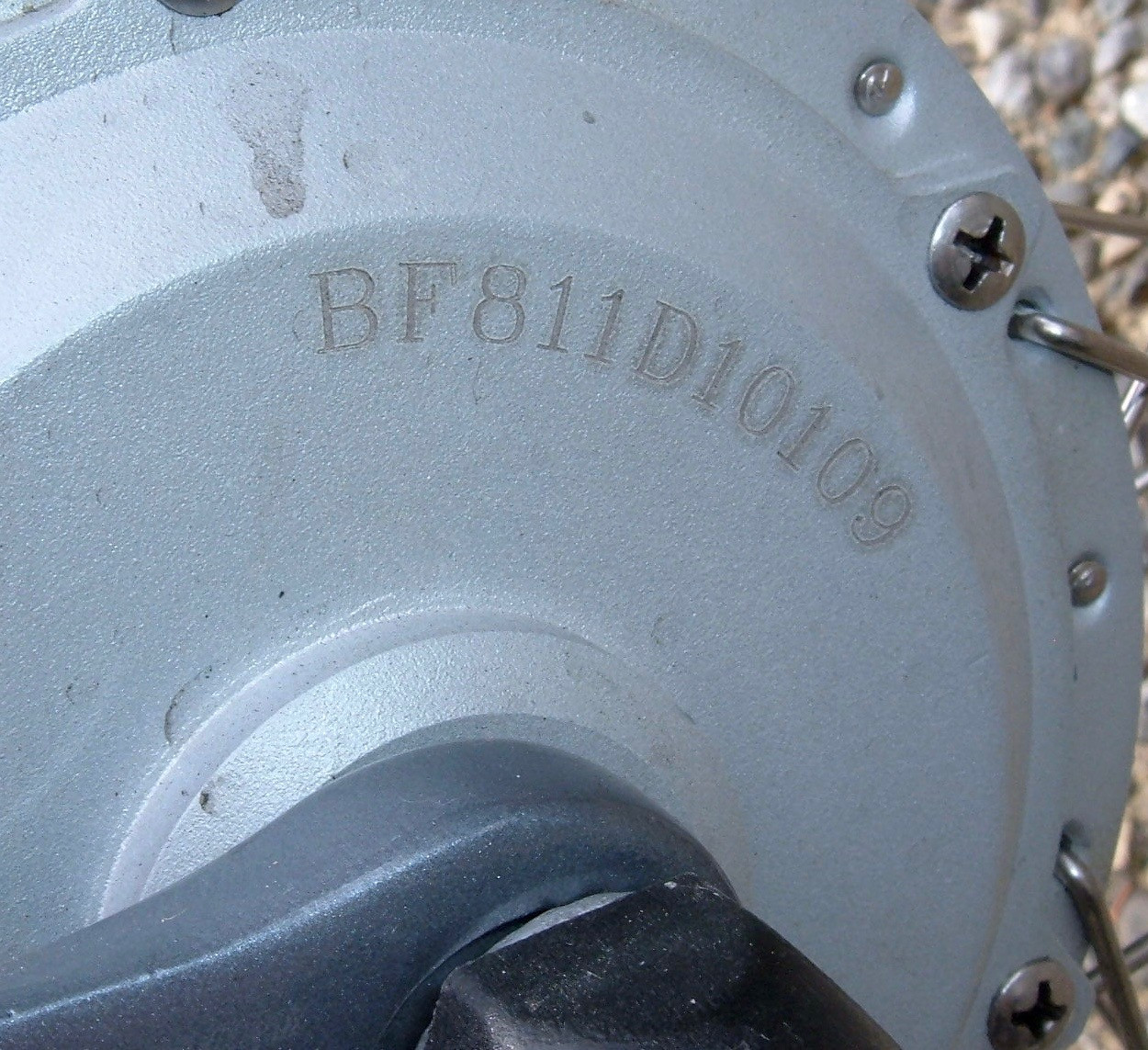
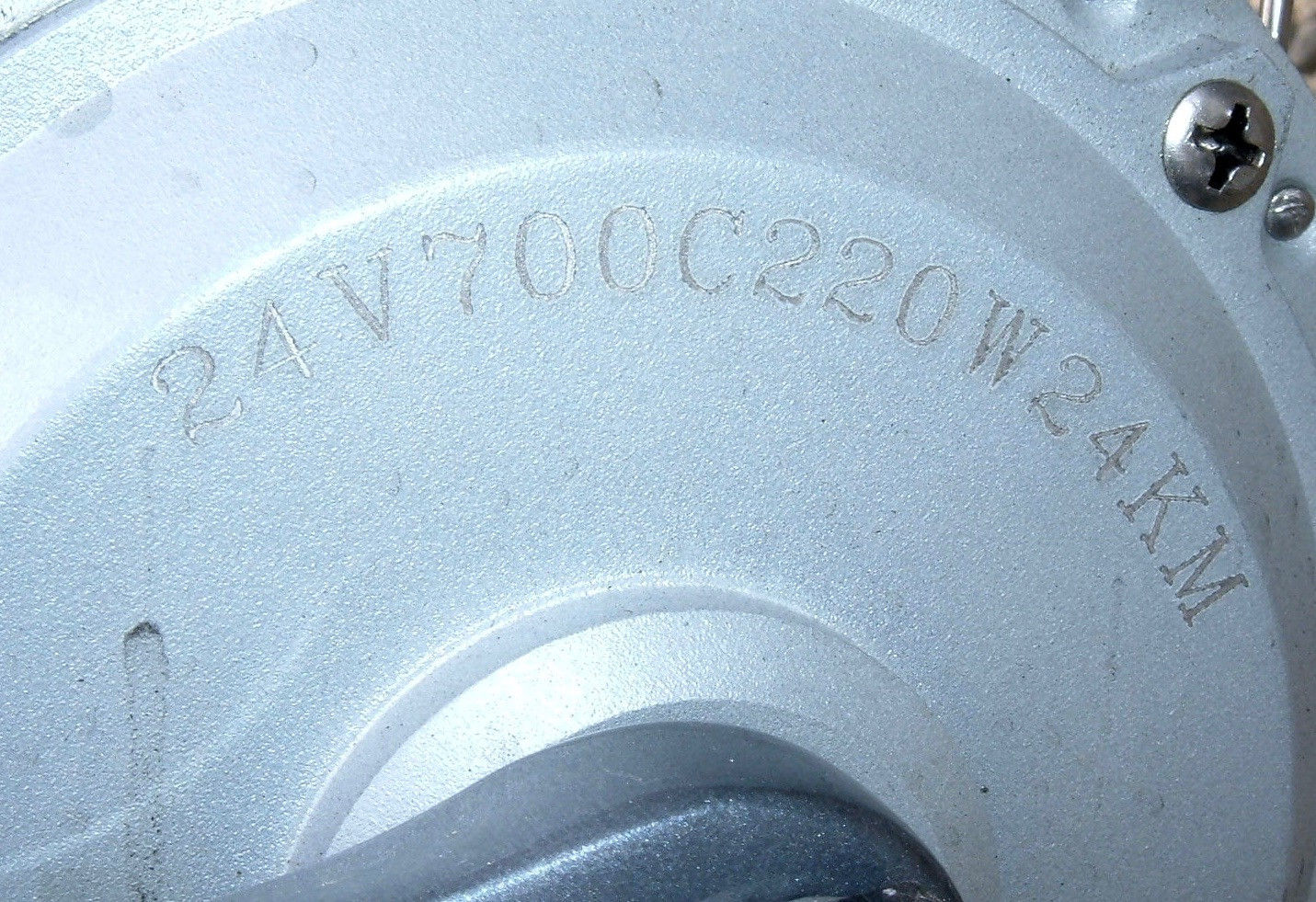
The front brakes are standard rim brakes. They’re nothing special, but they work quite well. Wrapping the front wheel is a decent enough fender, though it terminates a bit higher in the rear than I’d like for the wet Seattle winters (road spray).
The front fork is an adequate SR Suntour Nex 4610 with adjustable preload and suspension lockout. Why you need suspension lockout on this bike is actually quite beyond me.
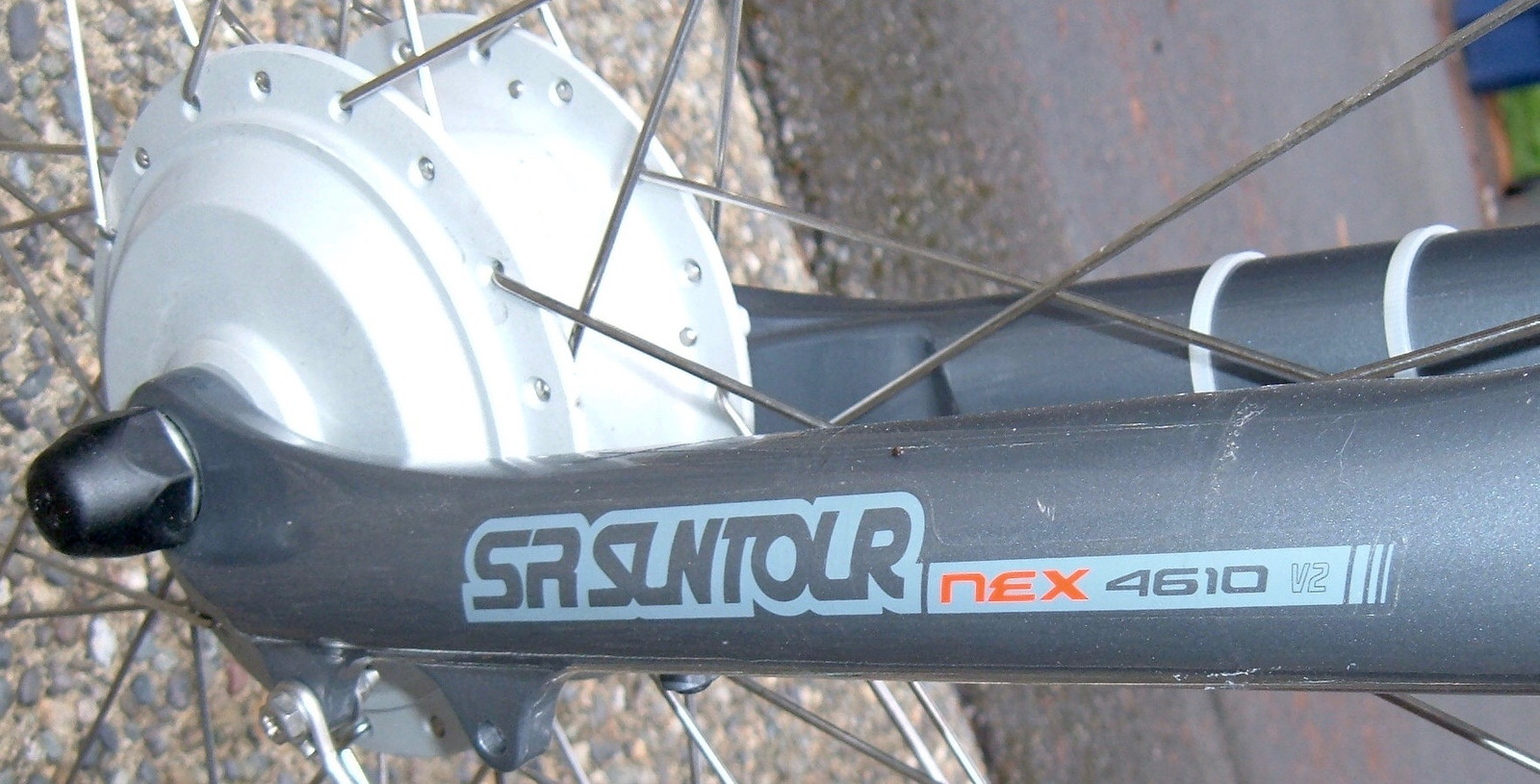
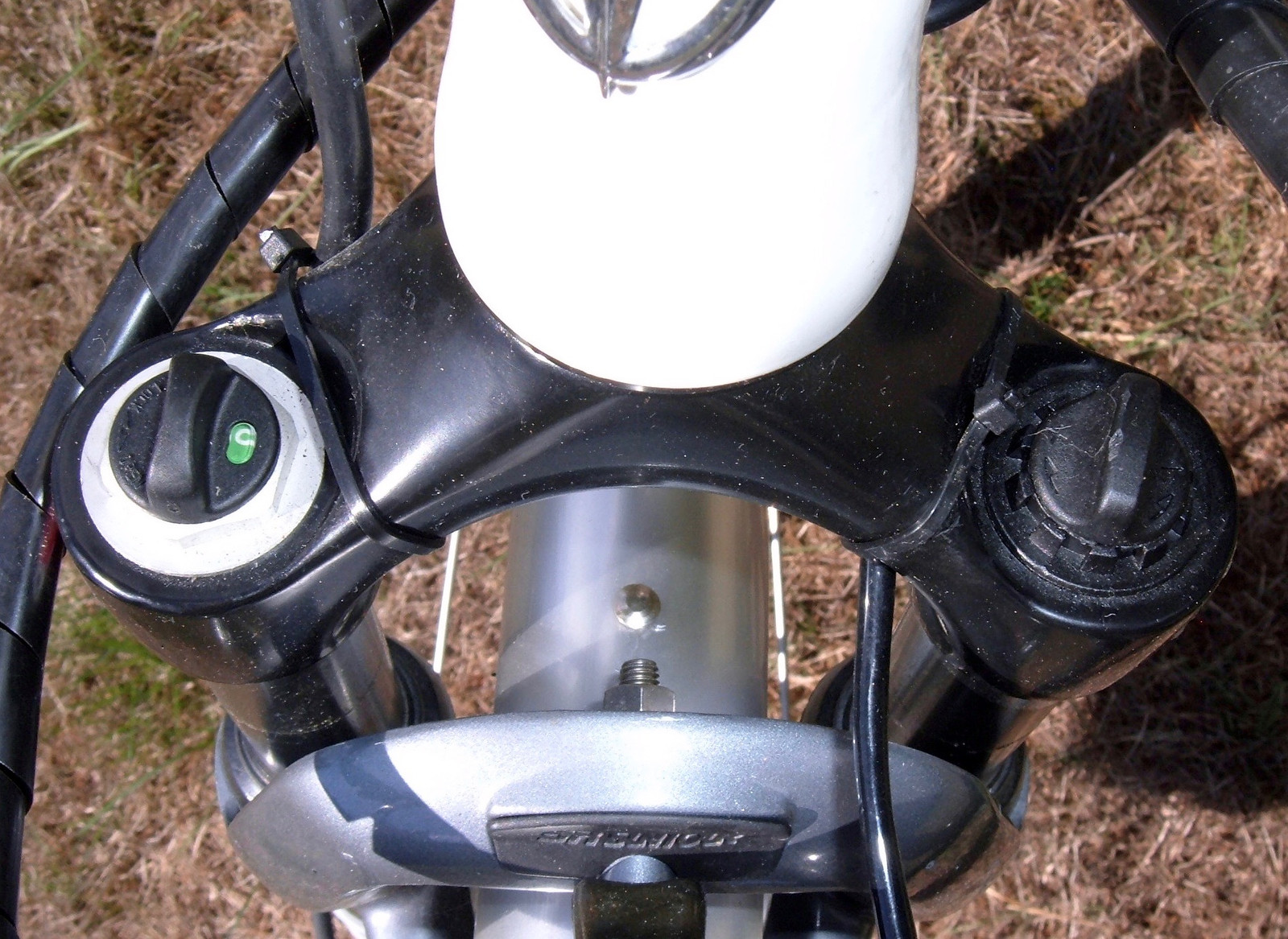
This is the front light (a Lumotec Oval Halogen) and reflector. It’s powered by a generator from the rear wheel. The light… lights up. It’s incandescent. It doesn’t get very bright. I’m not really sure what it’s point is since it’s not very useful at night, but it does have a front light.
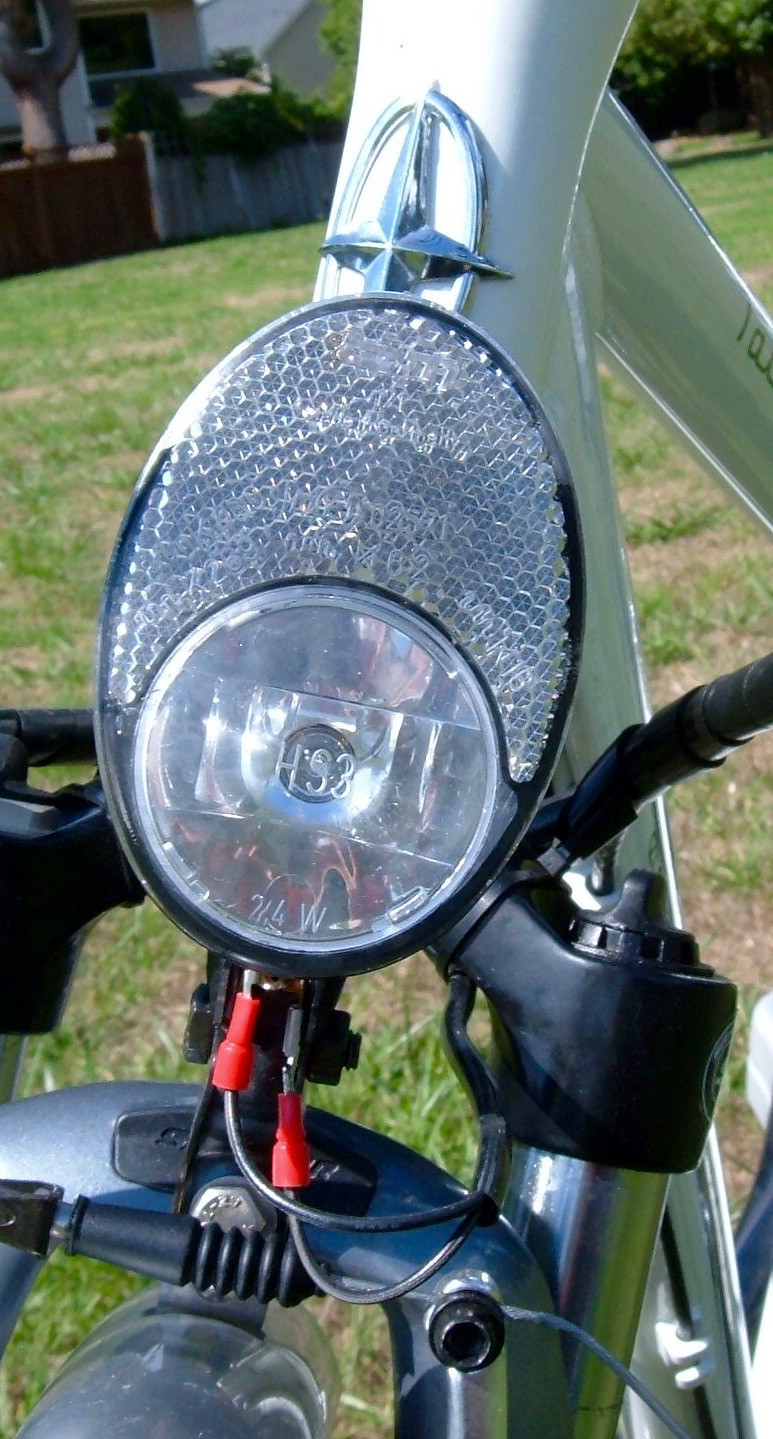
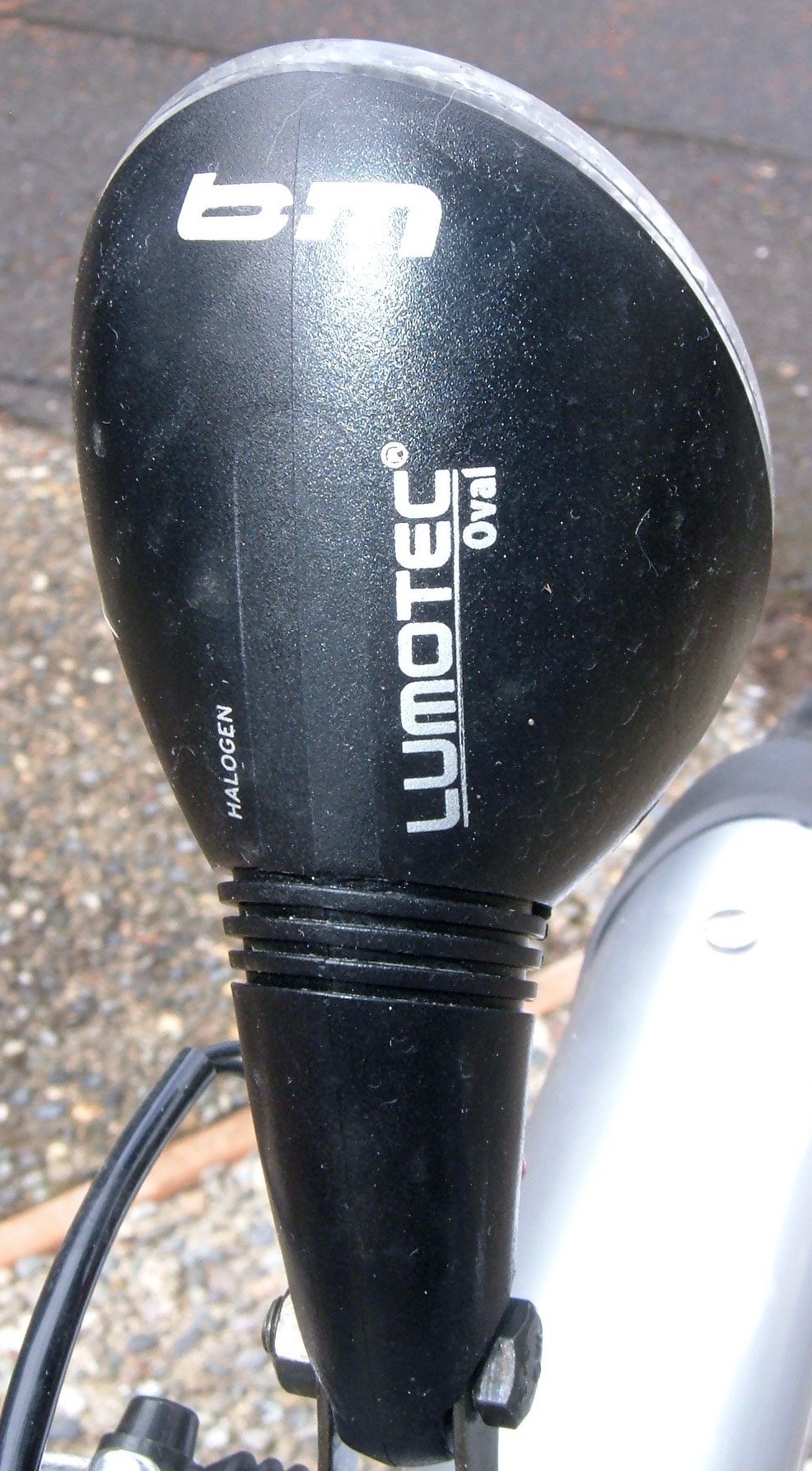
Handlebars
The handlebars are a bit unusual. For starters, they’re super swept back. They sweep back at a ~30 degree angle, which is very unusual for most bikes. They feel like they’re almost in your lap while riding, which is a weird feeling.
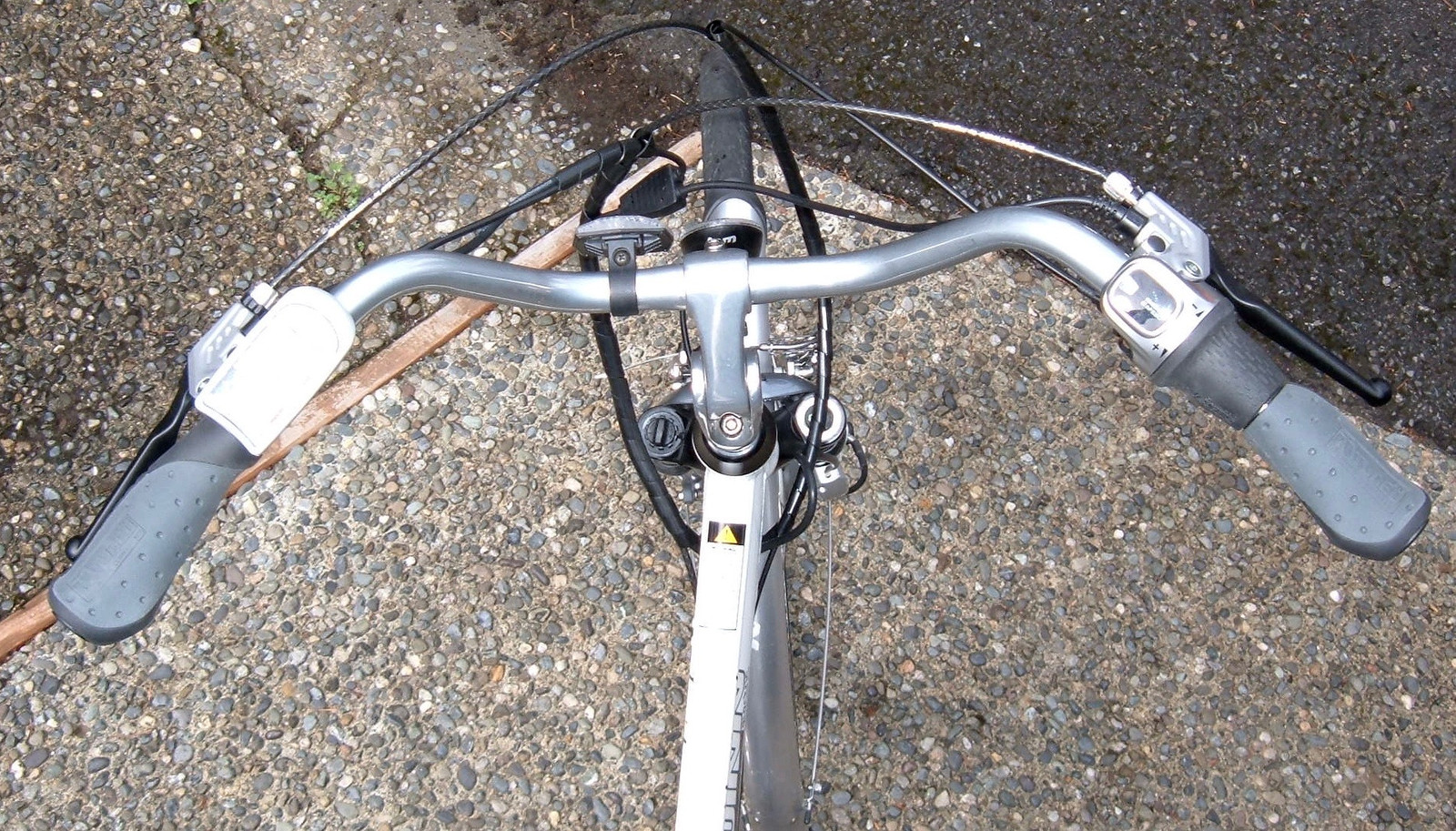
The left brake lever controls the front brakes and the right the rear, as is standard. On the left bar, there’s the controller for the motor. It has a basic on/off toggle, a battery level indicator, and a power mode button that toggles between low, medium, and high. I think the diagram above it shows that you’re supposed to use low when descending a hill, med on the flats, and high when climbing, though the riding position for that cyclist is radically more aggressive than this bike allows. You can easily switch between power modes, and this is the closest thing to a throttle the bike has.
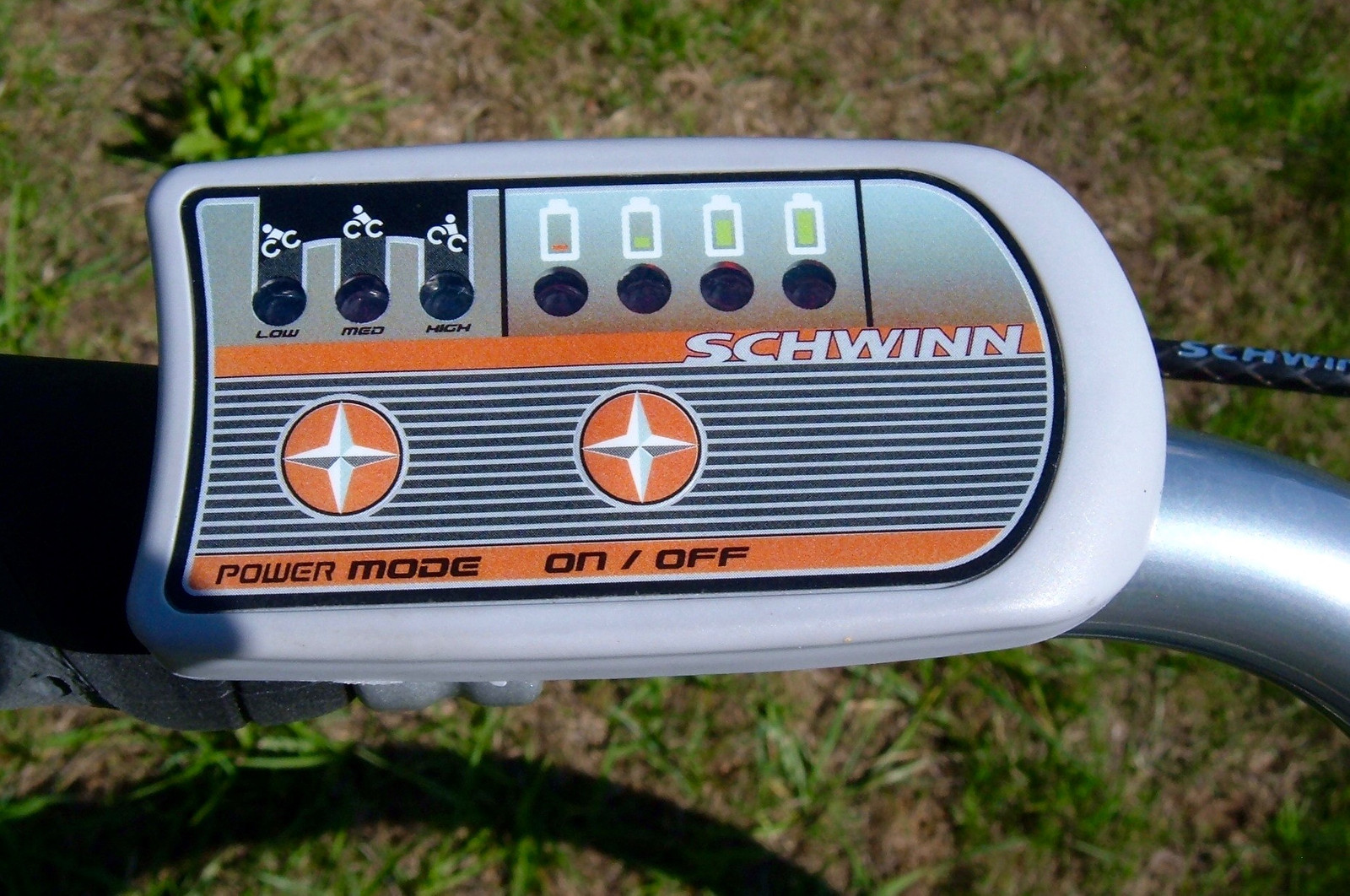
On the right is the shifter for the Shimano Nexus 8 speed rear hub. It shows you what gear you’re in (1 is low, 8 is high), and you twist it to shift. Quick, easy, and when properly adjusted, surprisingly nice. I really do like this controller for the shifting.
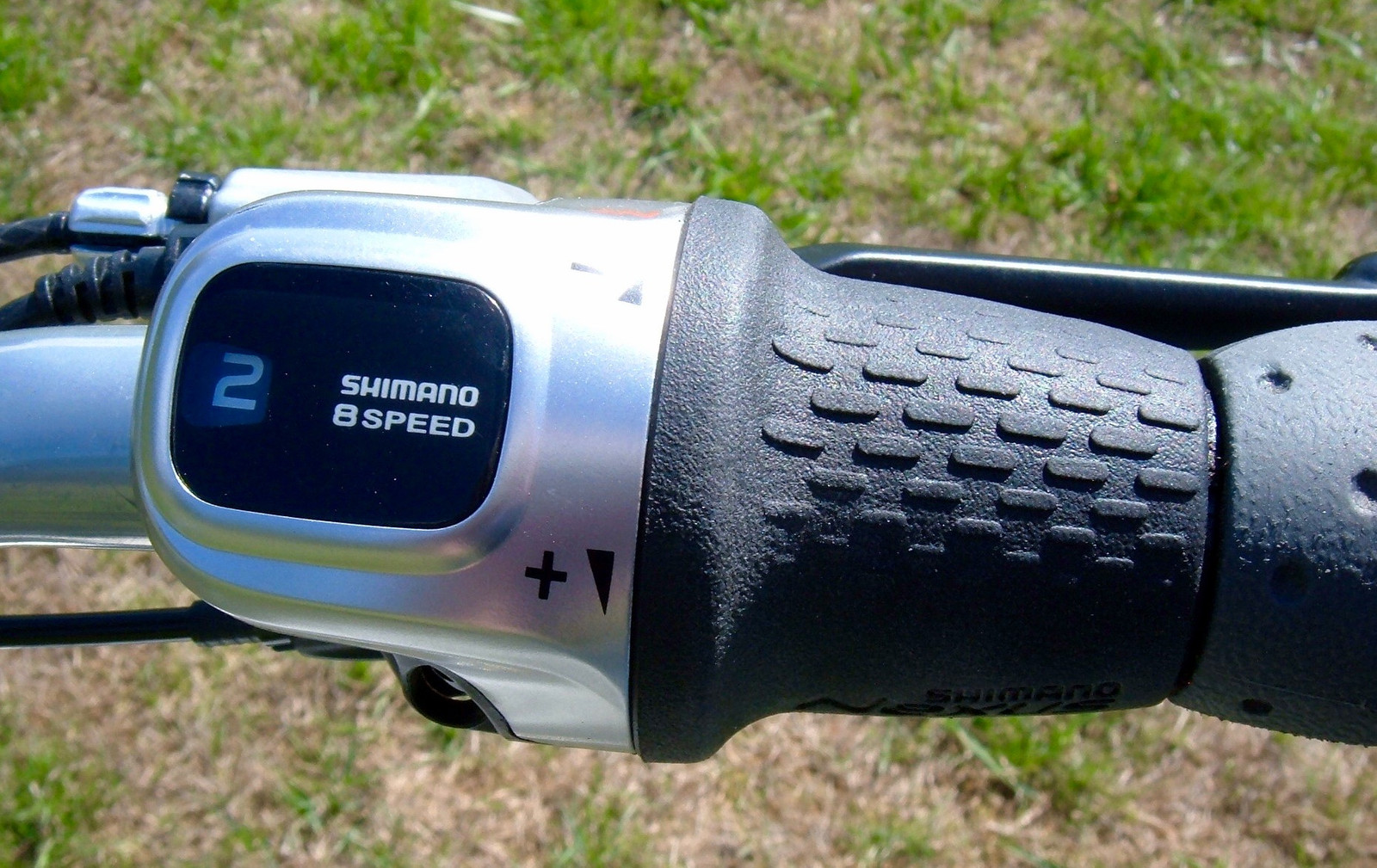
Pedal Drivetrain
The pedal drivetrain on this bike is different from any other I’ve ridden, and I really, really like it!
It’s using an internally geared rear hub with a straight chainline, well protected inside a plastic housing to keep it clean and to keep you clean.
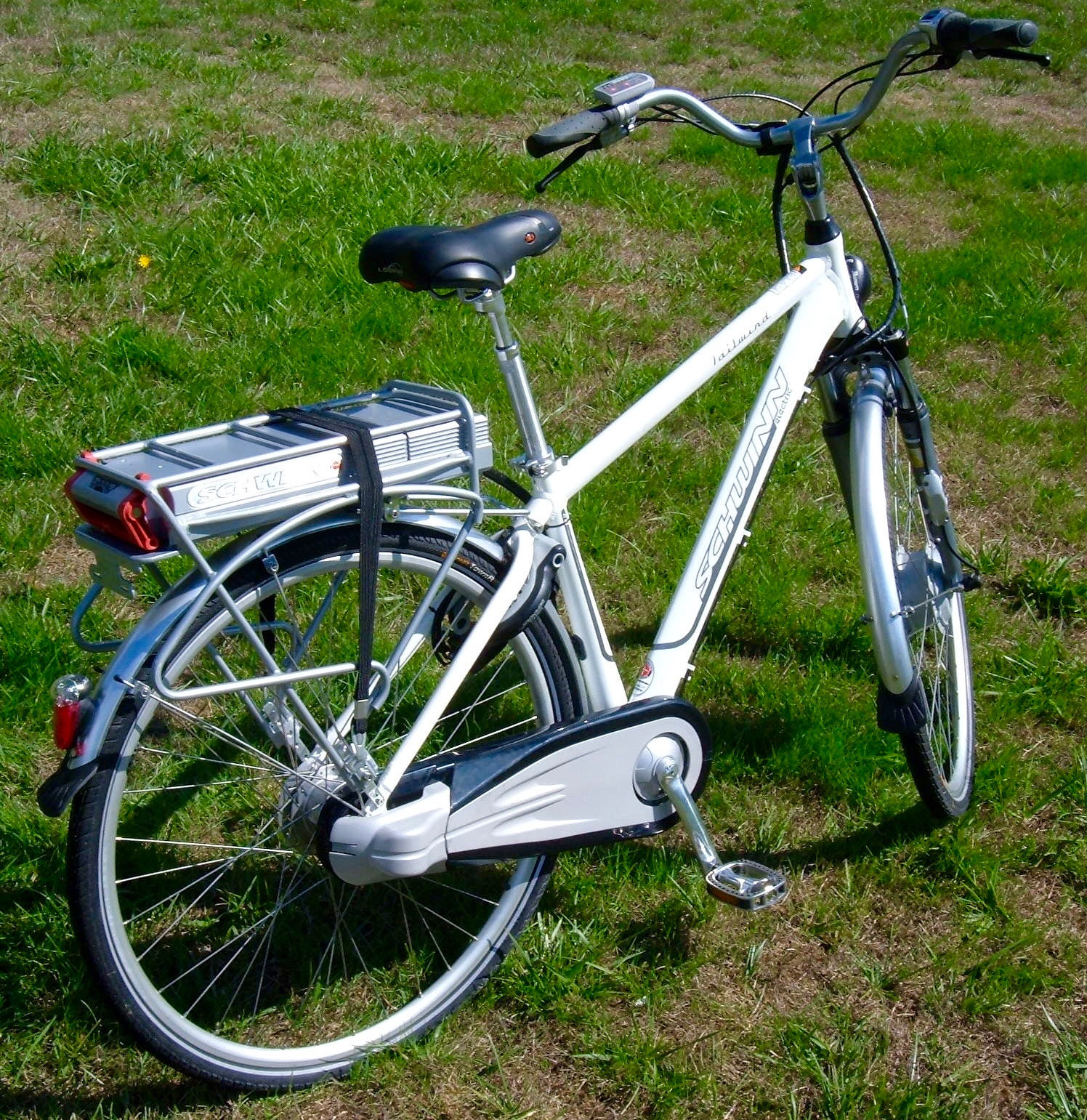
I’ll start at the front interface to the drivetrain. The pedals are nice metal units, with a grippy rubber strip around them. These are definitely easy on the feet or shoes, and are perfectly fine for barefoot riding, should you care to do so. They seem to be quite strong units, and I wouldn’t expect any problems with them, ever.
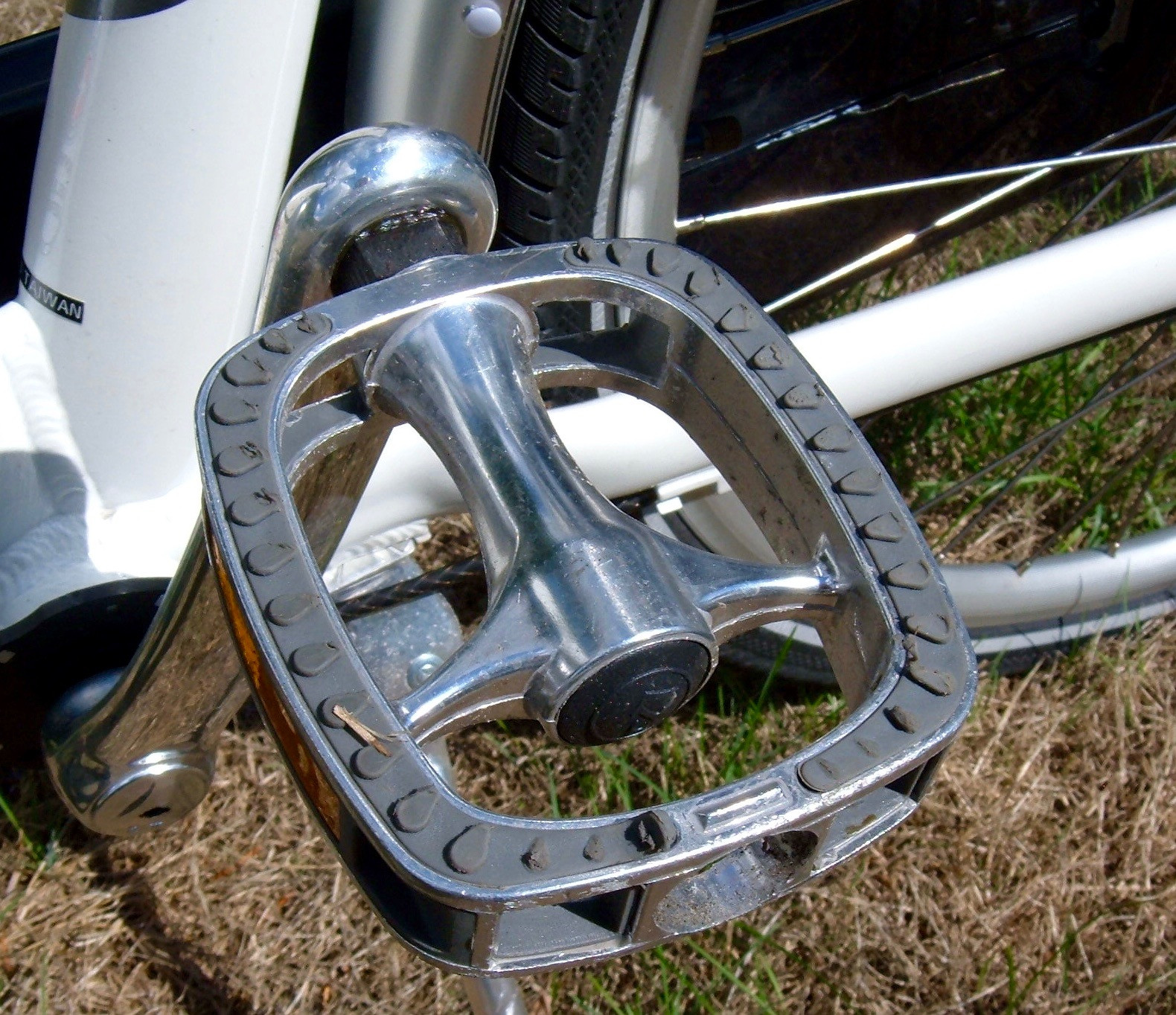
The (mostly) sealed drivetrain! There are four or five pieces of plastic that clip together to seal this thing up very well. Road or trail grit will stay out, and chain oil will stay in. They can do this because all the shifting is done in the rear hub - so it’s a straight, simple chainline with nothing other than two sprockets and a chain. I really, really like this feature - I can ride it in long pants and not get dirty, and if I take it on a dusty trail, the chain will stay clean and grit-free. This is awesome, and I’d love to see more bikes doing something like this.
It is a bit of a pain to remove if you have to change a flat, though. Slime the tubes and call it good, because this really does make riding less messy. No more pant-leg-in-sock rides to the stores, followed by forgetting about it and walking around for another few hours with your pants crammed into your sock!
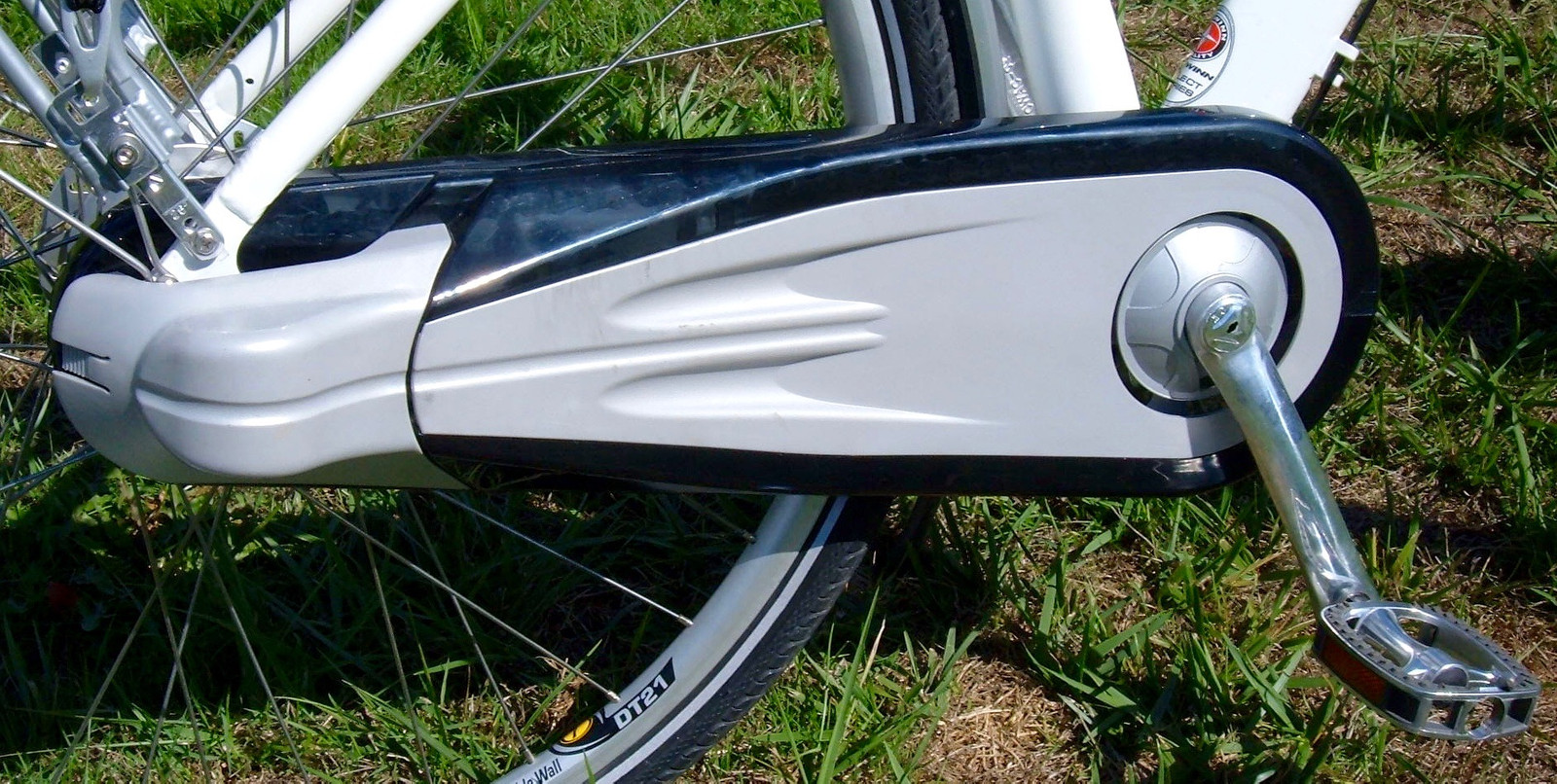
At the back end is a Shimano Nexus 8 speed rear hub with a rollerbrake for braking power. The internally geared hub is fairly obvious (8 speeds, with a set of internal gears), but the rollerbrake was something new to me. It’s a totally sealed brake unit, similar in some ways to a coaster brake, but applied via a standard brake lever. That it’s sealed means it’s totally immune to rain and dirt - which is awesome!
Downsides include complexity, lack of repairability, and adequate braking at best if you have hills. The braking feel is also very springy - there’s no real feedback in the lever, just an increasing force that goes all the way to the bars, and increases braking effort. It might lock the rear wheel up on ice, but that’s about it. Fine on the flats, though.
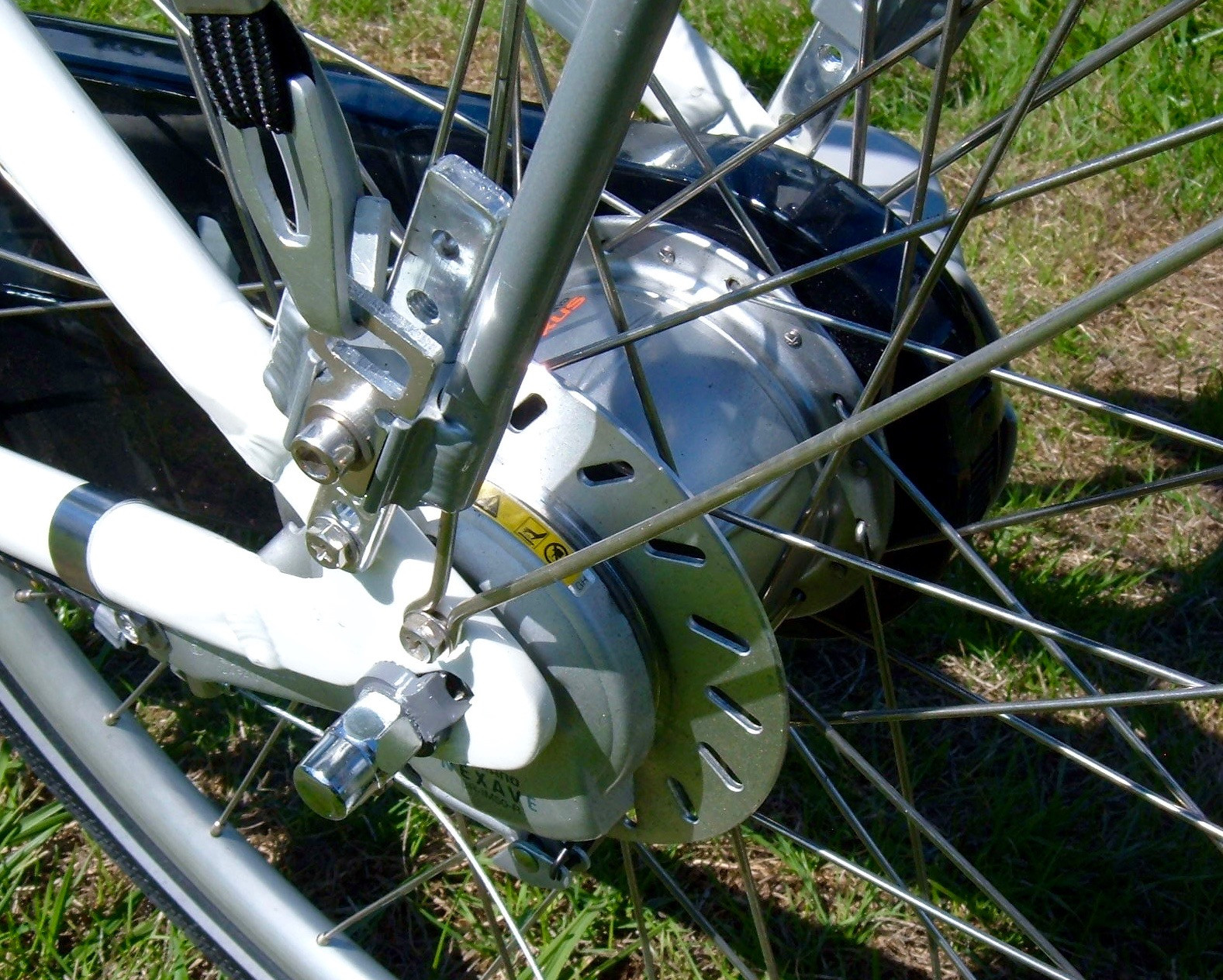
Seat, Wheel Lock, and Generator
I’m quite impressed with the seat on this bike. It’s a good blend of “comfortable while sitting on it at the store” without being horrendous to actually ride. It’s, obviously, 3D - I really hate those 2D seats, so this is a good one. Or… something. I’m not sure what the 3D label is for, actually.
In any case, it’s one of the better stock seats I’ve seen on an electric bike so far. Nice job here - this seat is absolutely suited to what the bike is good for.
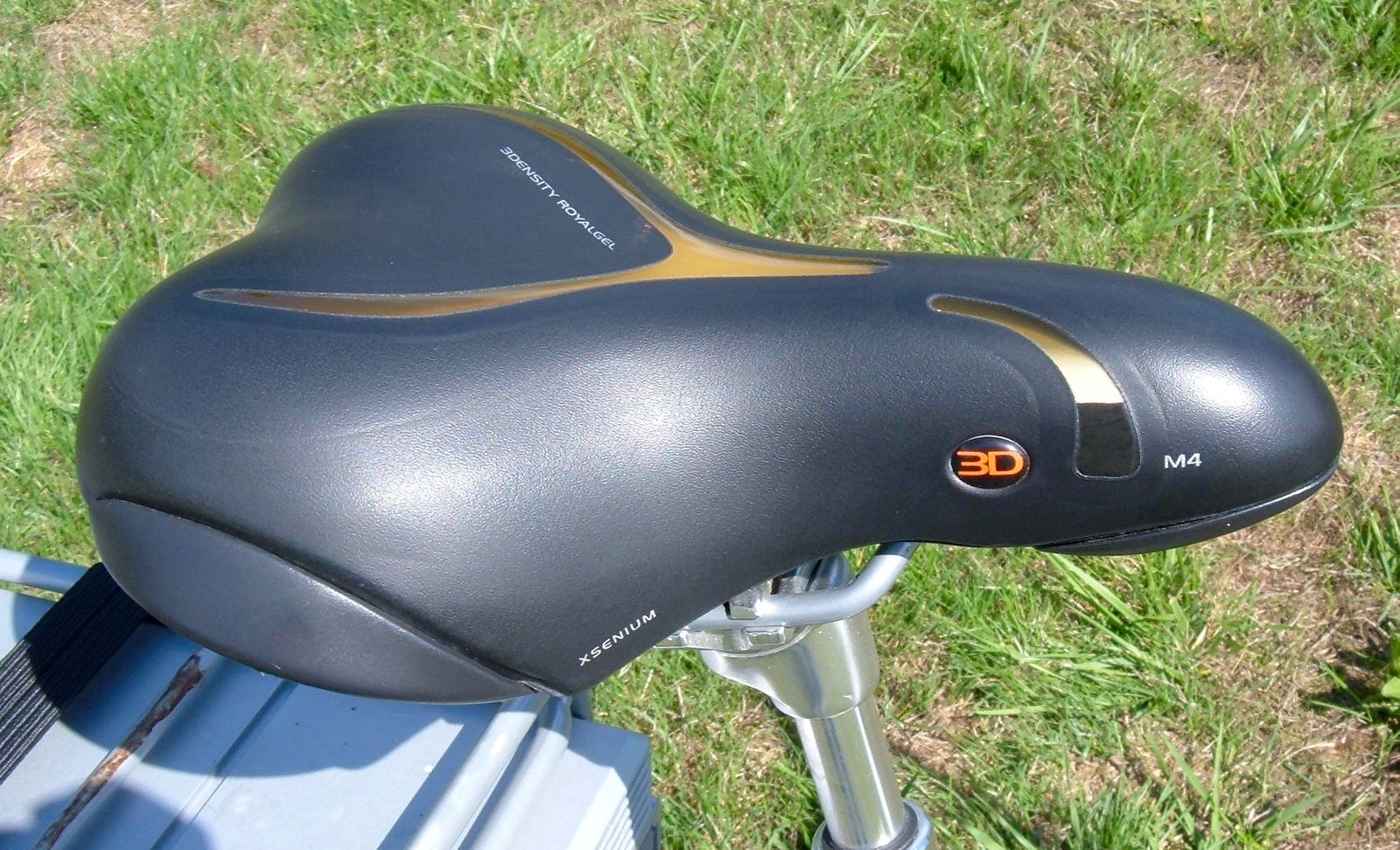
An interesting feature I’ve not seen before is a wheel lock. The upper horseshoe-shaped thing is a keyed wheel lock that lets you run a metal bar through the spokes. This keeps the rear wheel attached, and also prevents someone from biking off with it. It’s no substitute for a chain, but in a friendly community (such as a retirement community on a lake somewhere), it’s probably good enough.
Below the wheel lock is the generator. For the lights. On an electric bicycle. _sigh _Also, you’ll see more zip ties, holding the generator wiring in place.
If you start from the assumption that the electric assist is a best-effort system, and that you’ll rapidly exceed it’s range, this makes some amount of sense. But not much. Lights just don’t take much power, and a generator, rubbing the wheel, is annoying and noticeable.
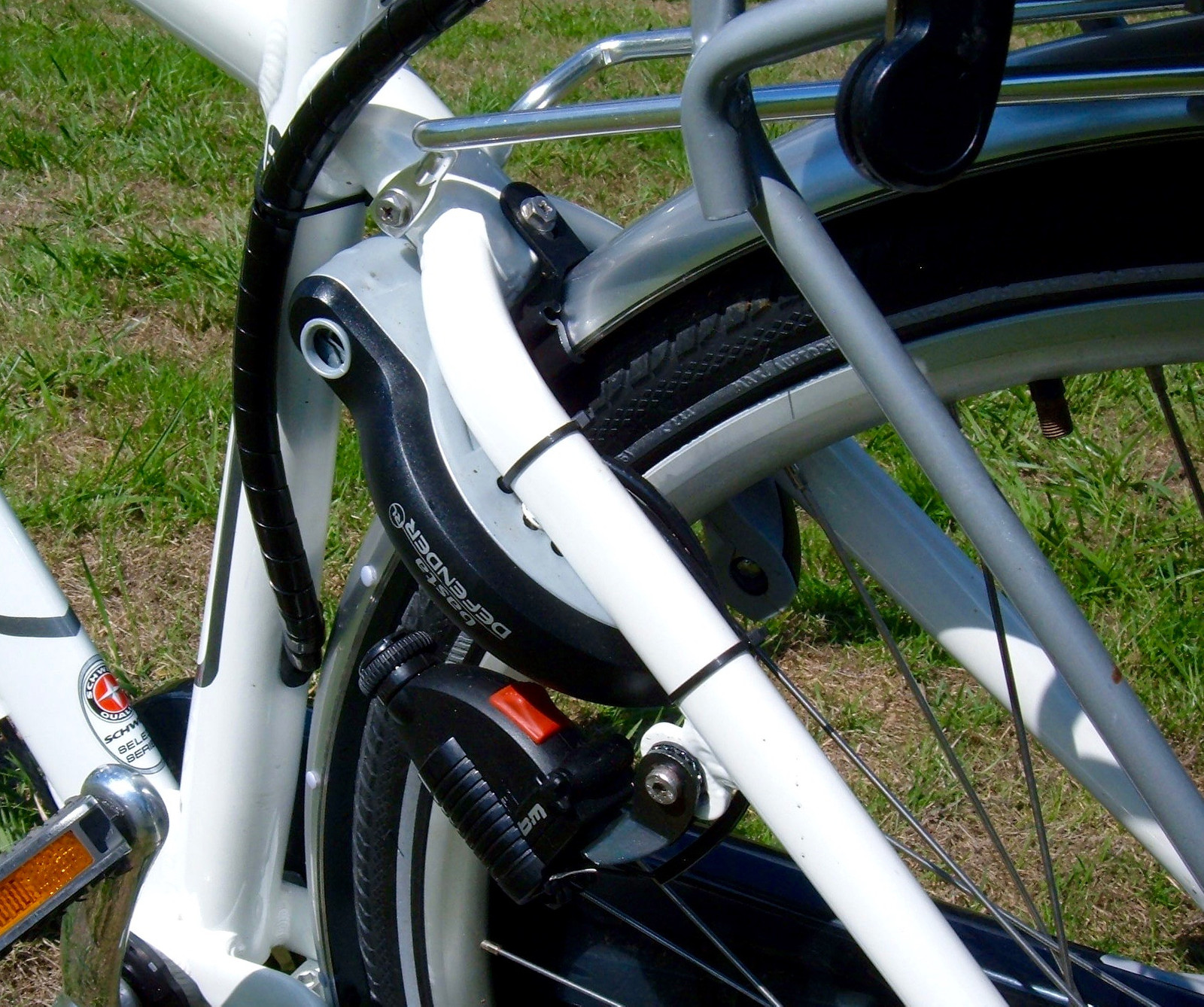
If you look closely, you can see the metal bar sticking through the wheel. Also, the switchblade key is visible, inserted into the lock. There are two keys for this bike. One for the lock, one for the power.
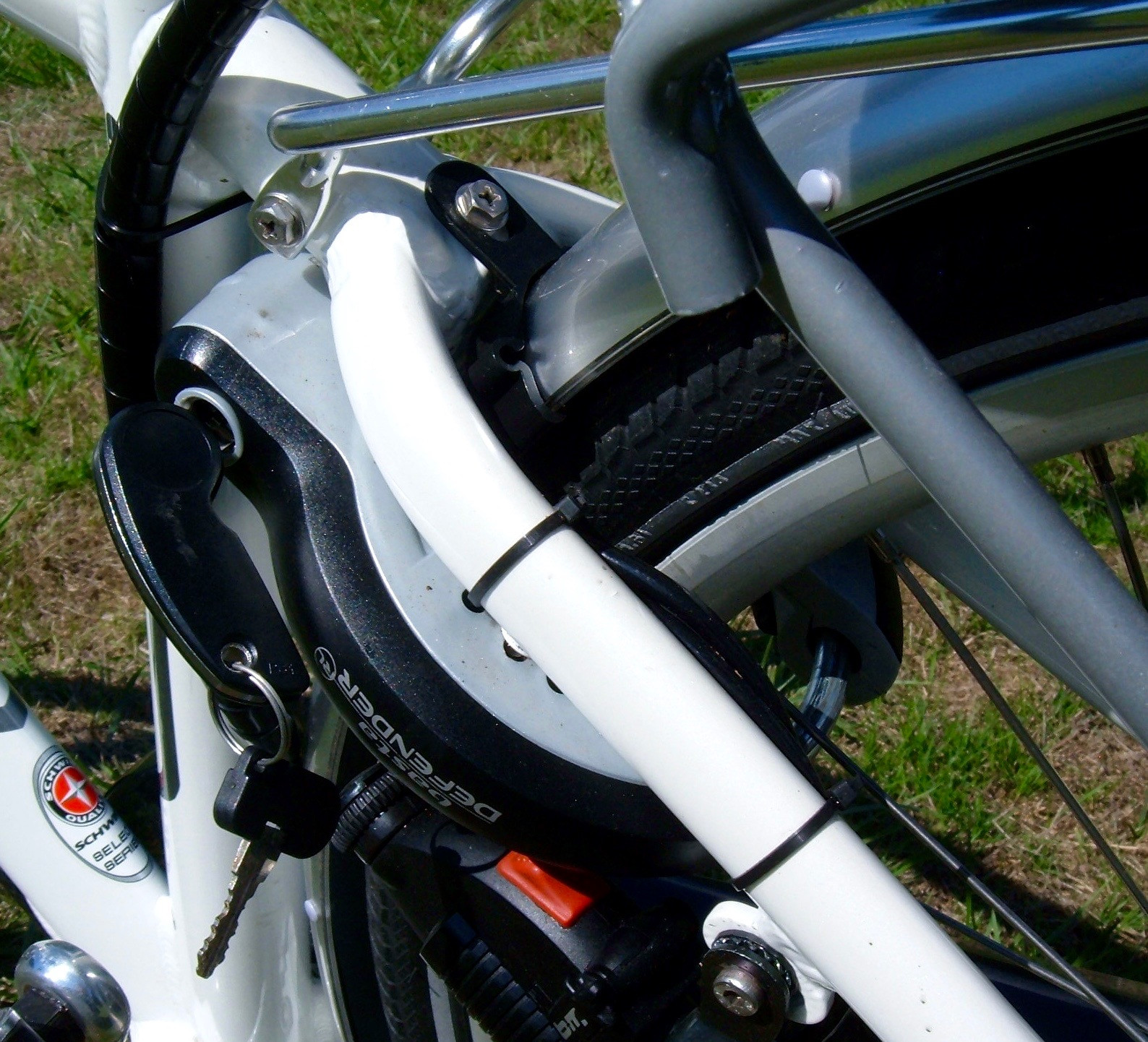
The wheel lock is a Basta Defender, if you’re curious (apparently now, the AXA Defender).
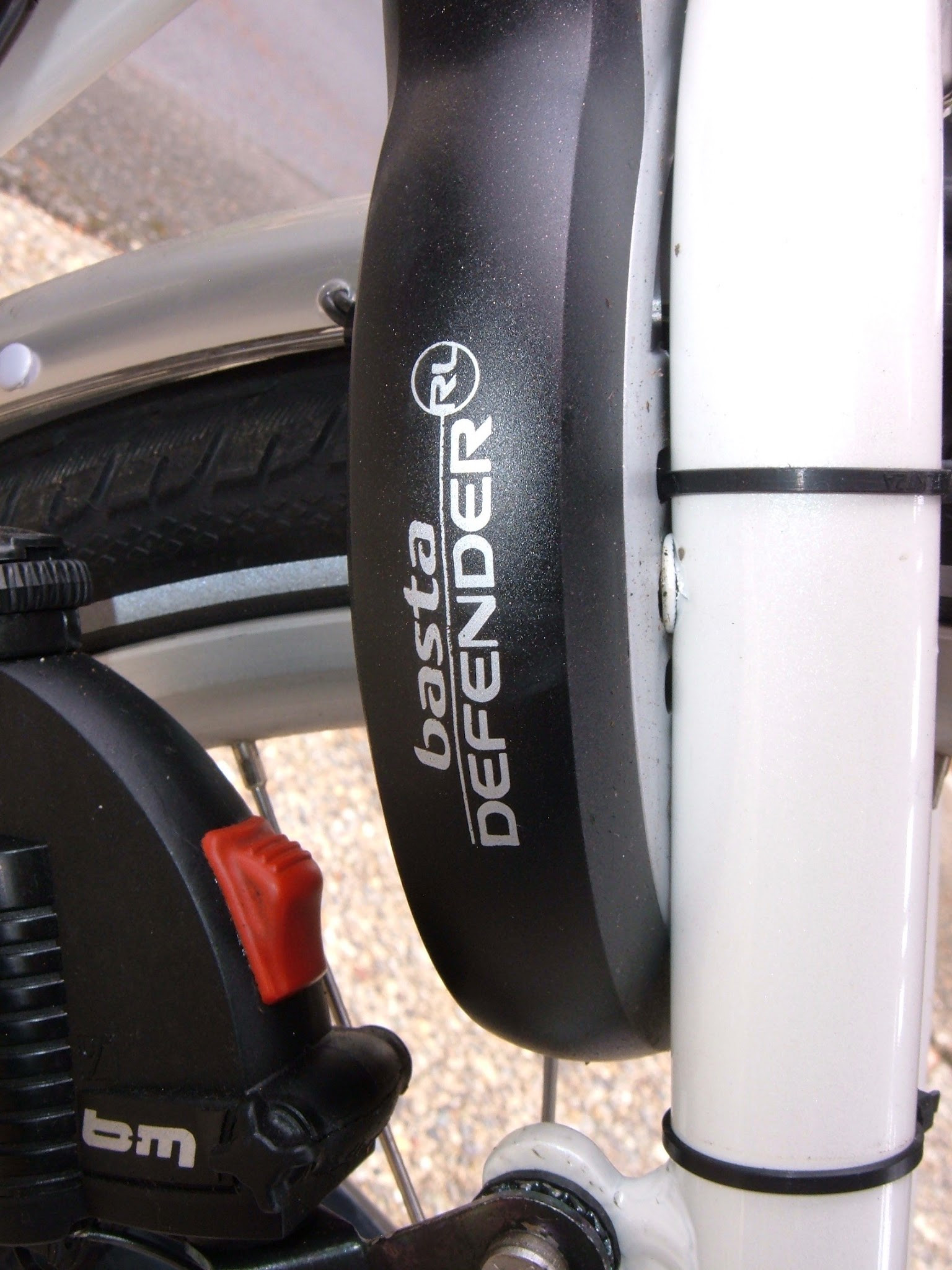
More zip ties holding the wiring harness in place. The Tailwind parts really are literally zip tied onto a standard bicycle frame. Some bolts, but mostly zipties.
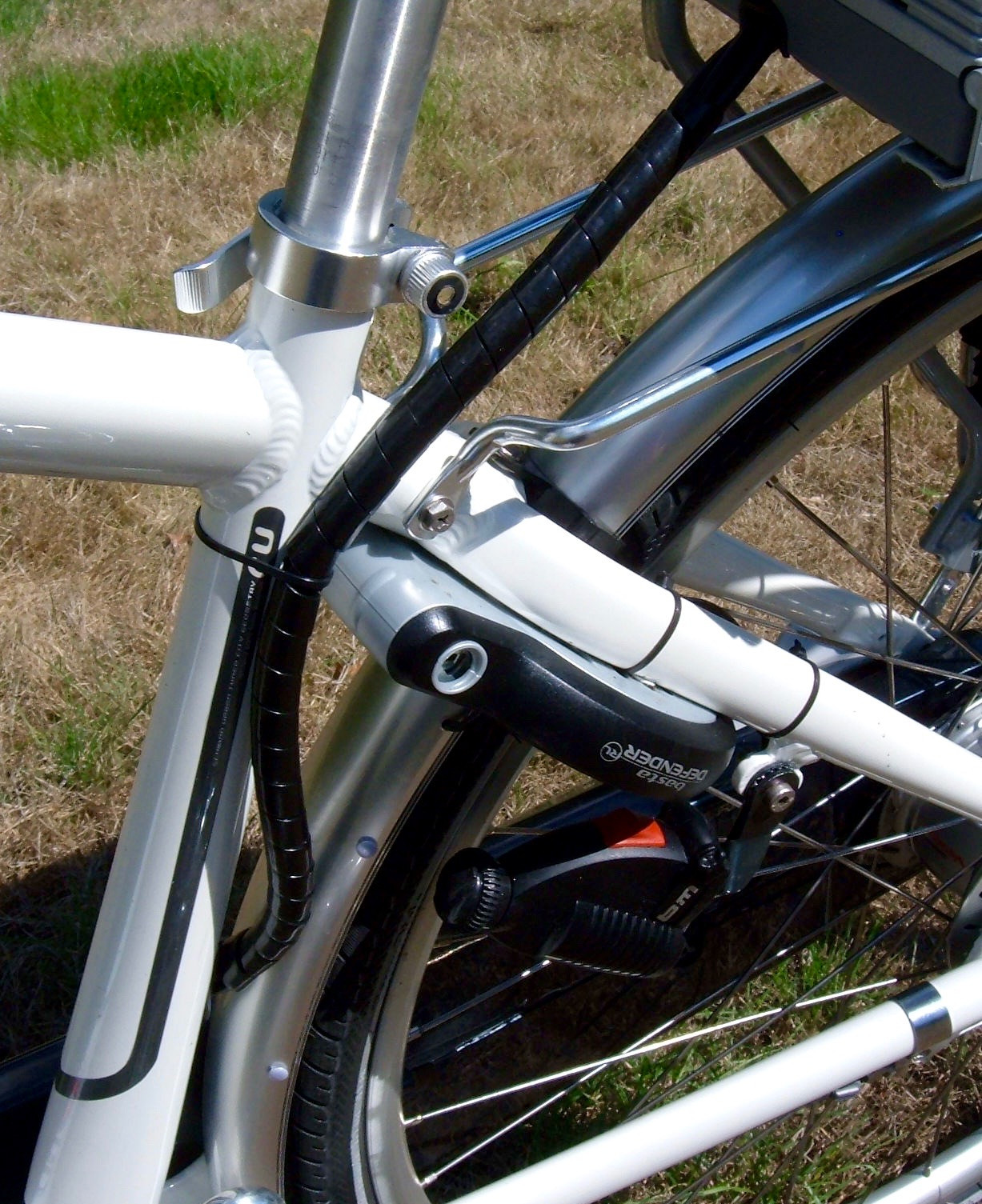
The Back End: Battery & Lights
On to the last part of the bike - the back!
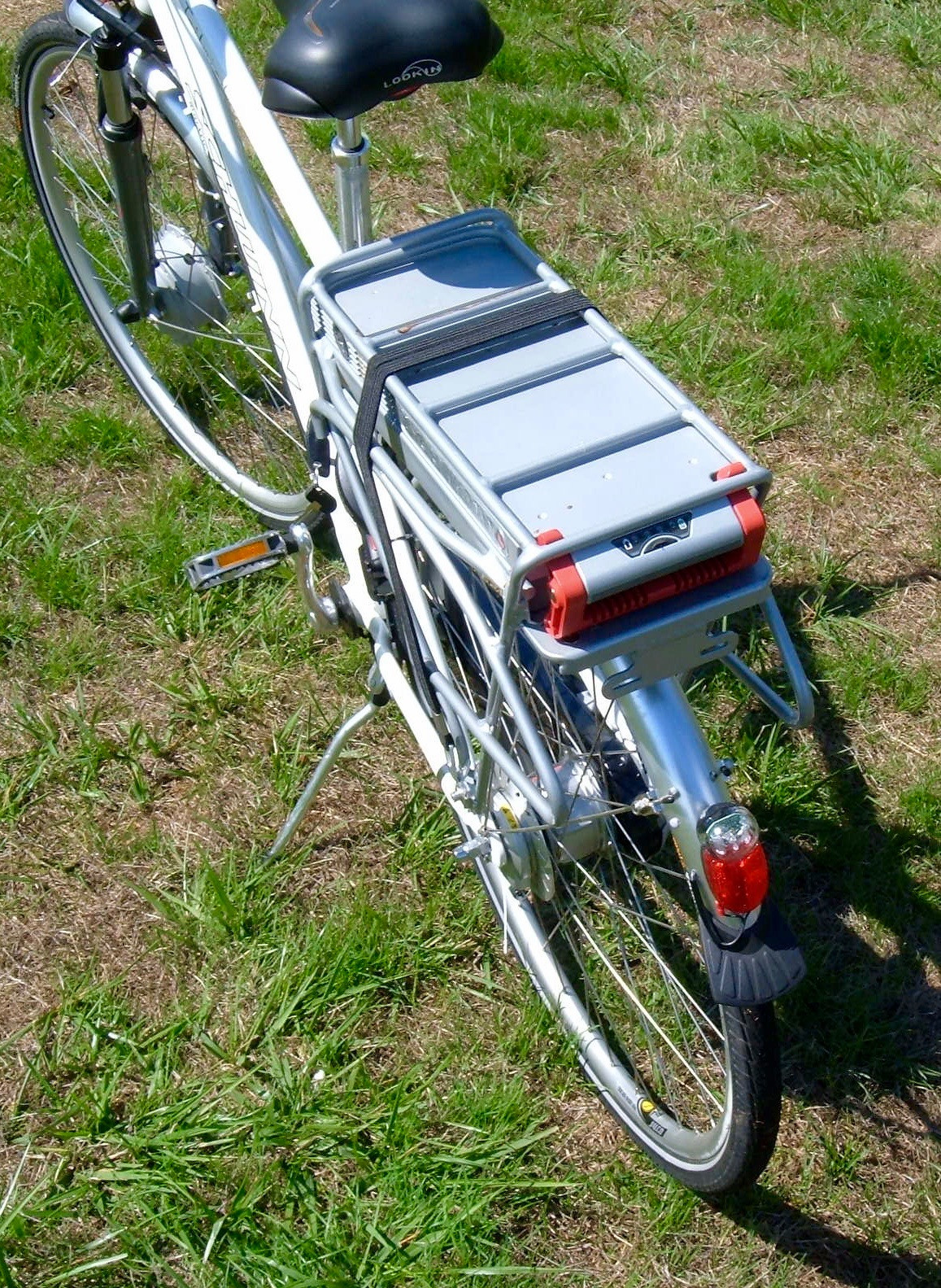
The rear rack holds the battery pack, the contacts for the battery pack, and comes with a nice elastic strap for holding things down. I really like the elastic strap!
Two things to notice here: The keyed switch, on the left, and the pack release lever (red), on the right.
You have to turn the switch on first, then turn on the bike from the handlebars. I suspect this is designed to reduce battery drain when idle, but it doesn’t really work. And it’s annoying. There’s not a great spot for the wheel lock key, though you can sort of wedge it into the frame if you try.
The second thing to notice is the battery pack removal lever. If you have a key on an electric bike with an expensive, exotic battery pack, it might make sense to lock the pack into the bike somehow. Nope! The pack is always free to slide right out. It’s the easiest pack to remove I’ve ever seen.
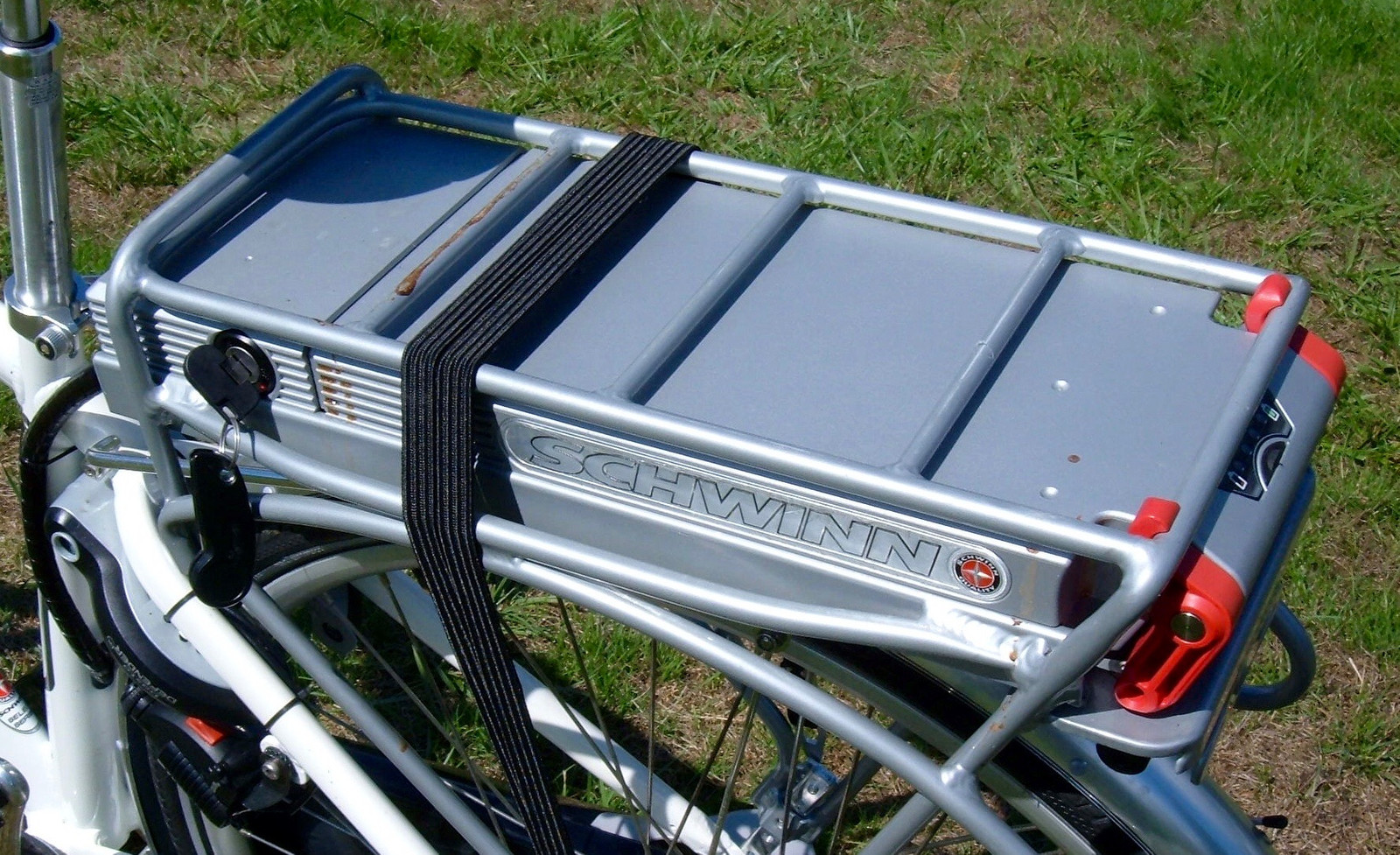
Here’s some detail of the two keys. The left one turns the bike on, the right one unlocks the wheel lock. I really don’t know why they went with two keys… (actually, I do - it’s because the parts were sourced from different manufacturers, and this was the easiest thing to do)
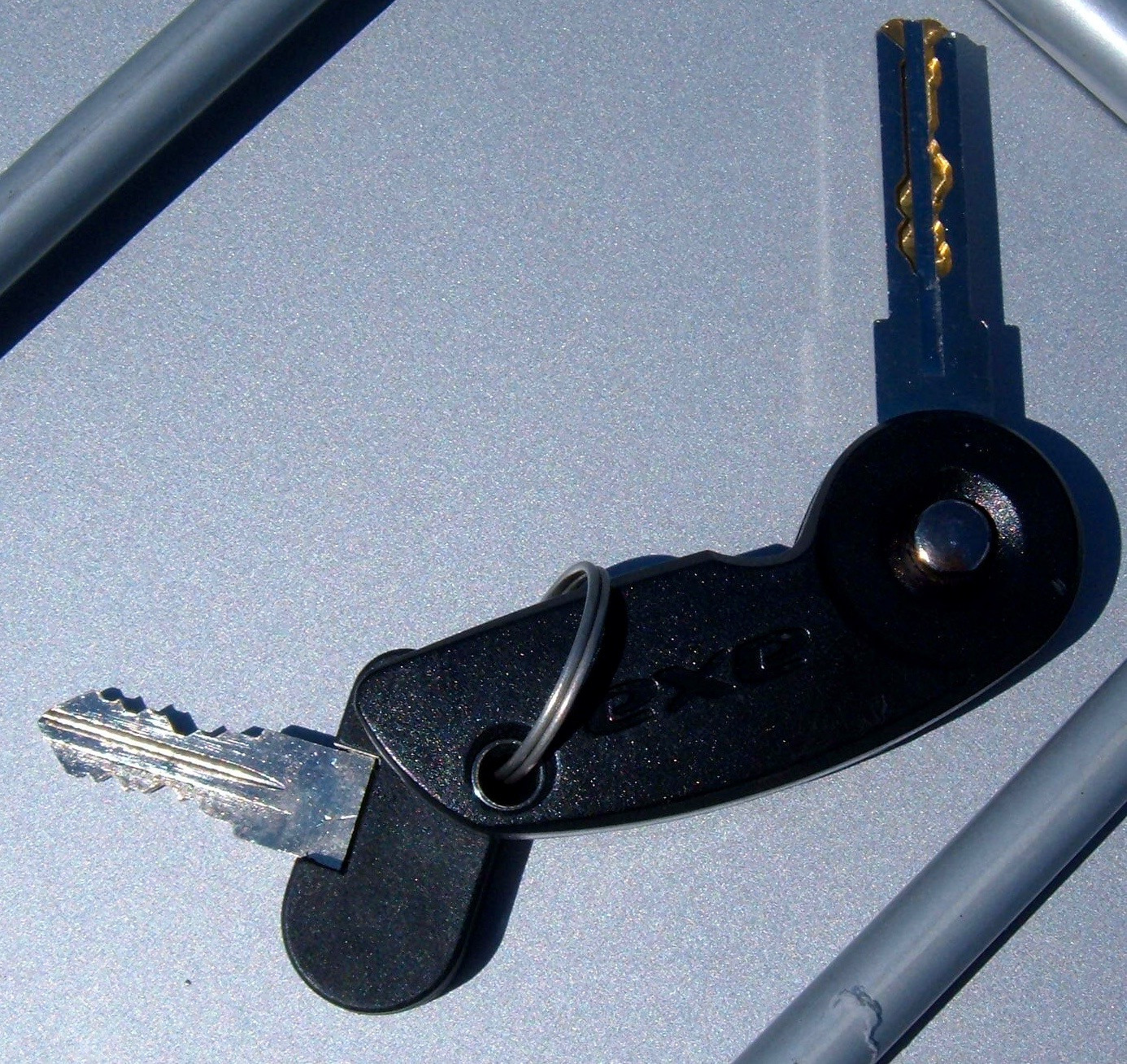
Finally, the rear LED tail light and reflector. Mostly, it’s a reflector. The tail light does glow somewhat, but it’s not very bright, and it goes out as soon as you stop moving.
You shouldn’t ride this bike at night without some other source of lighting. Or, at least, replace the generator with a small battery pack.
You can see where the power for it comes through the fender and wraps around. However, there are no zip ties here!
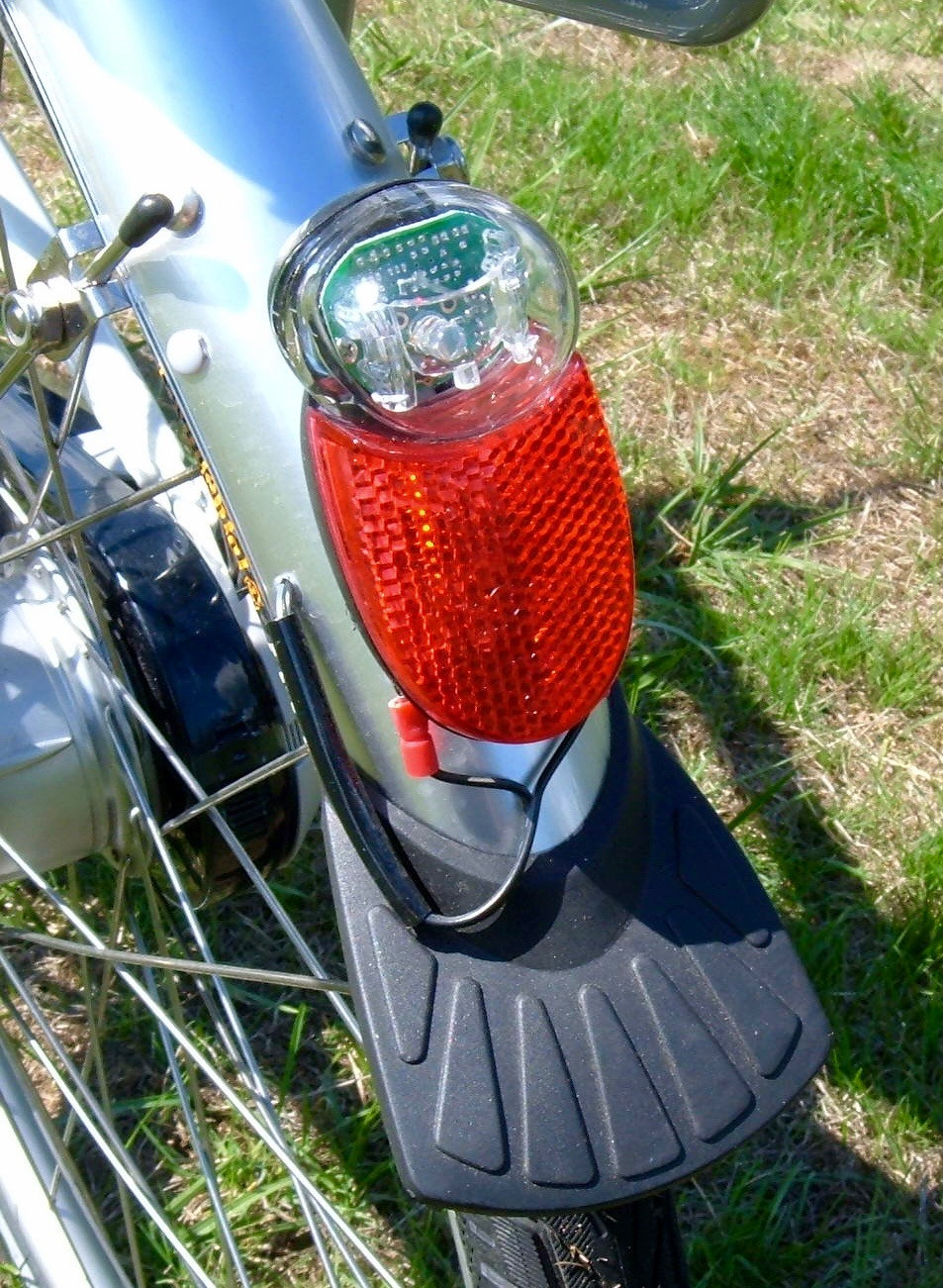
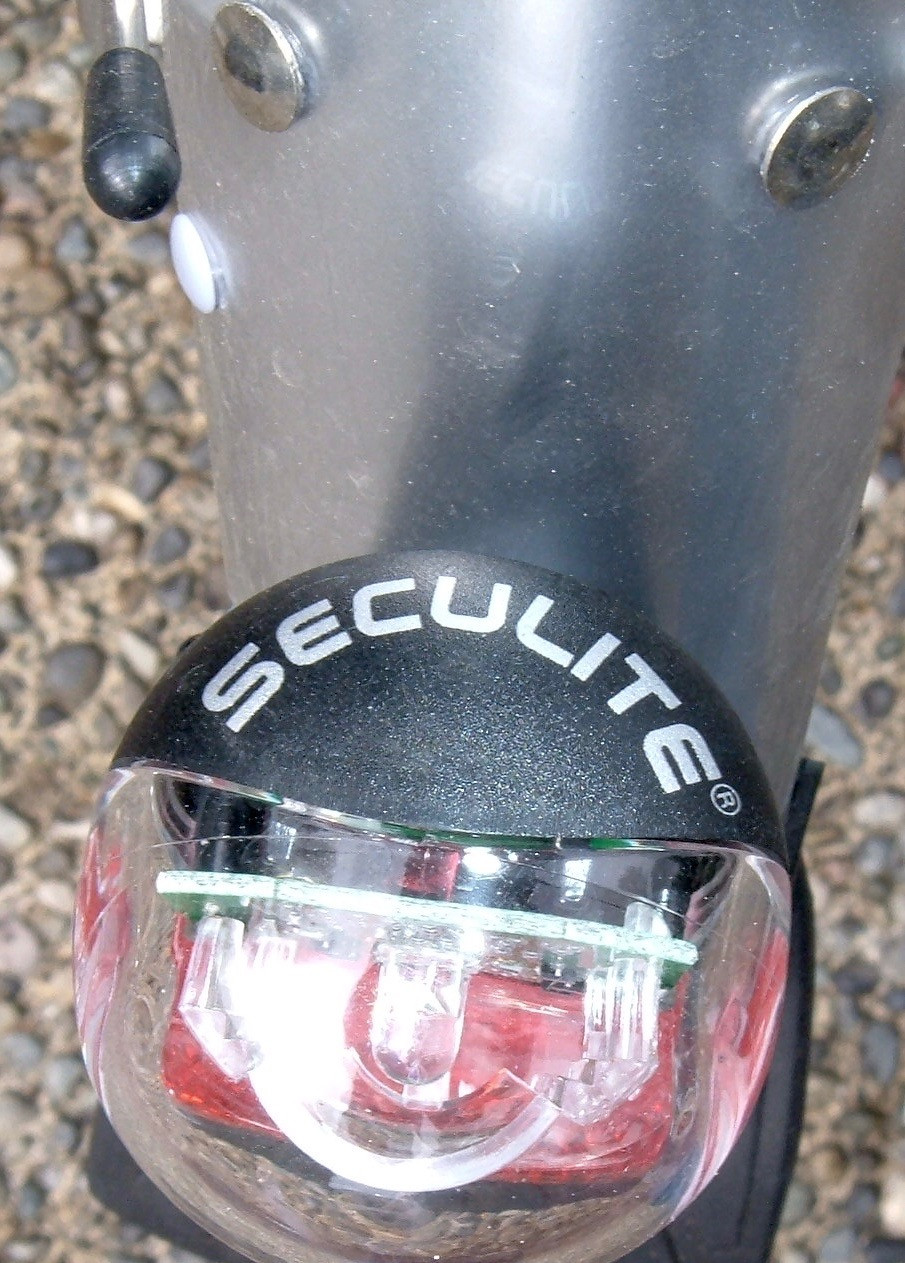
Finally, just because I think it looks cool, the logos on the frame.
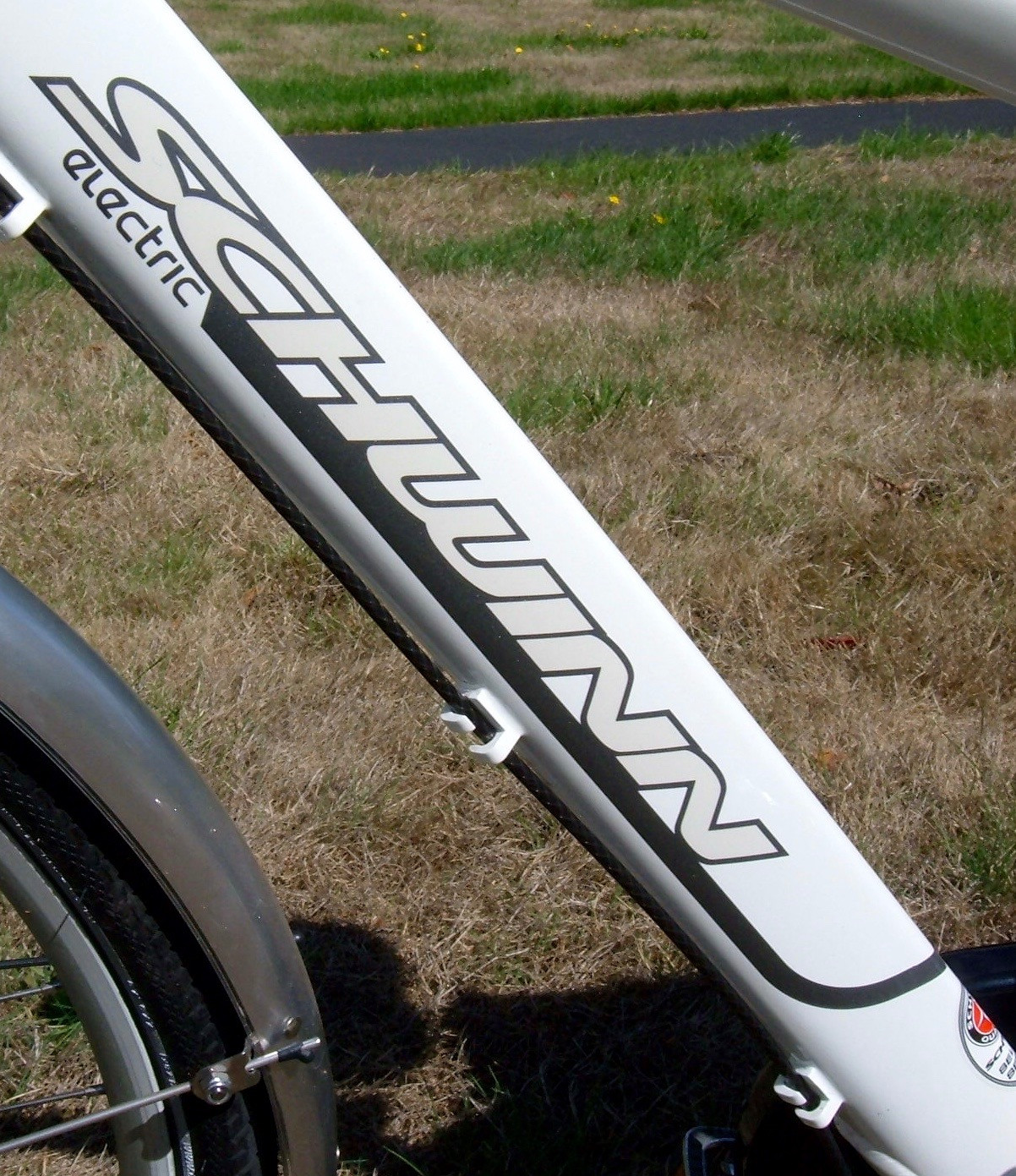
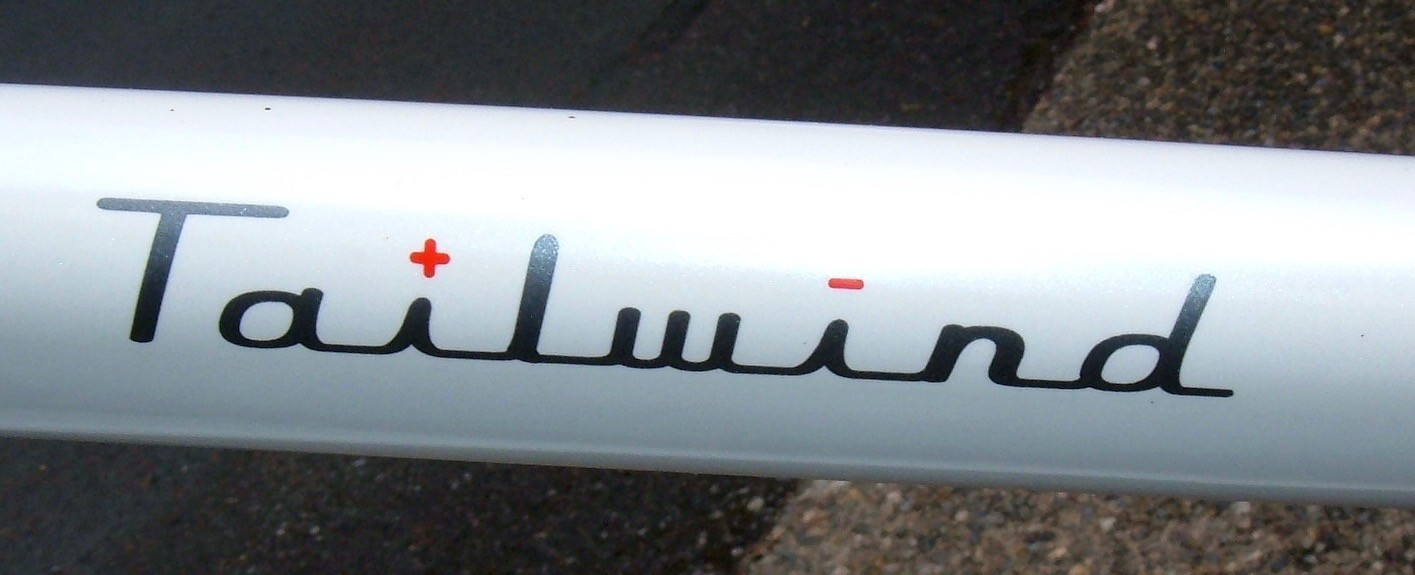
Riding It
Riding this bike is easy enough, once you remember to turn the key on. Turn the key on back at the battery pack, then turn the handlebar controller on (if you want the assist), get on, and start riding.
Riding Position
The most obvious thing about riding this bike is the riding position. It’s upright. Super, super, incredibly upright. Imagine you’re an 80 year old man. Get your pants hiked up to just below your sternum. Make sure to get your suspenders nice and tight. Put on your best loafers, your town cruising hat, and carefully step onto this bike. Don’t bend your back at all! Vertical! There. You’ve imagined the riding position on this bike.
The bars being swept are a big cause of this, but the end result is that you do feel like an 80 year old man.
Pedal Assist
The motor assist on this bike is purely pedal assist, though it’s more fair to call it “pedals are moving, motor is on” - since that what it seems to be. Start pedaling, and the motor will chime in at some power, mostly dependent on what you’ve set on the handlebar control. It pretty much does that until you stop pedaling or hit a brake lever. Very simple. Do recall that this bike was designed around 2008, so a lot of the more modern stuff didn’t exist. However, BionX was around, with their I2C torque sensing motors, so there’s at least some better stuff available.
A neat little perk of this system is that if you drop down to a low gear and spin the pedals freely, the motor will still power you along. I’m sure it’s not doing good things to the range, but it works!
On the flats
On flat ground, the bike is heavy but livable without the assist. The rear hub shifts quickly, and it’s nice to have a full range of gears without having to think too much about it (though, my commuter build also has this feature). It’s impossible to get the chain crossed up or do anything bad to this setup.
With the assist running on low or medium, the bike rolls smoothly and lightly, and the assist blends smoothly with pedaling. It can actually be hard to tell if it’s working or not, until you tap the on/off switch and realize, yes, it’s helping out nicely. There’s no need for the max assist level on flat ground.
It’s not fast - you’ll cruise comfortably at 12-14mph, maybe a bit faster if you pedal, but this is a rather slow running bicycle. It’s not built for going places in a hurry. You’re also not going to tuck down over the bars, ever. Good luck if you’ve got a headwind.
For running slowly on flat terrain, the brakes are just fine. The rear brake, if a bit springy, will get you stopped, and the front chimes in quickly to bring you down in a hurry if you need to.
Hills
Ah. But you have hills, you say. Well then. That changes everything.
If they’re shallow hills (perhaps, what Iowa calls a hill), you’re fine. If they’re steep hills (Seattle style), get another bike.
Steep hills lead to several significant problems on this bike:
- The gearing doesn’t go low enough. Grinding up a steep hill, gear 1 is not low enough. And you can’t really stand on the pedals - the bike ergonomics make it nearly impossible, and also that level of torque is apparently a reliable way to break a Shimano Nexus rear hub.
- The motor just doesn’t help that much. It’s only a 250W motor. Even at full output, it’s better than nothing, but only barely. It’ll help you slowly grind your way up the hill, but it doesn’t want to be doing it. Hopefully it doesn’t drain the tiny battery midway up the hill, or you’ll find yourself walking.
- The steering gets very loose when grinding up a hill. With the front motor turning up a steep hill, it’s putting enough load on the front wheel that the steering will no longer self center, and it’s very vague and floaty. It’s somewhat disconcerting.
- The rear brake won’t slow you down much going down a steep hill. Hopefully your front pads are in good shape! Also, if you do insist on dragging the rear brake down a hill, be aware that the rollerbrakes can suffer permanent damage from overheating, and can’t be rebuilt. So there’s that.
Seriously, if you have steep hills, this is not the bike for you. It’s absolutely terrible with steep hills that other electric bikes chew up easily.
Electrical System
I’ve covered the battery pack elsewhere, in great detail. Also, how to bypass the BMS if it’s gotten unhappy.
In a nutshell, it’s a 24v, 4AH battery pack composed of reasonably exotic lithium titanate cells. They’re a Toshiba SCiB unit, and have, on paper, an insane cycle life. Though the BMS doesn’t seem to help this much.
By modern terms, it’s a tiny system - only about 100WH (watt-hours) of capacity. Also, by some of it’s competition at the time, it was a tiny system. The BionX 36v system from 2007 packs over 350WH of capacity into a smaller battery case - though the BionX system actually uses the full case, instead of having a small battery tucked inside a large case.
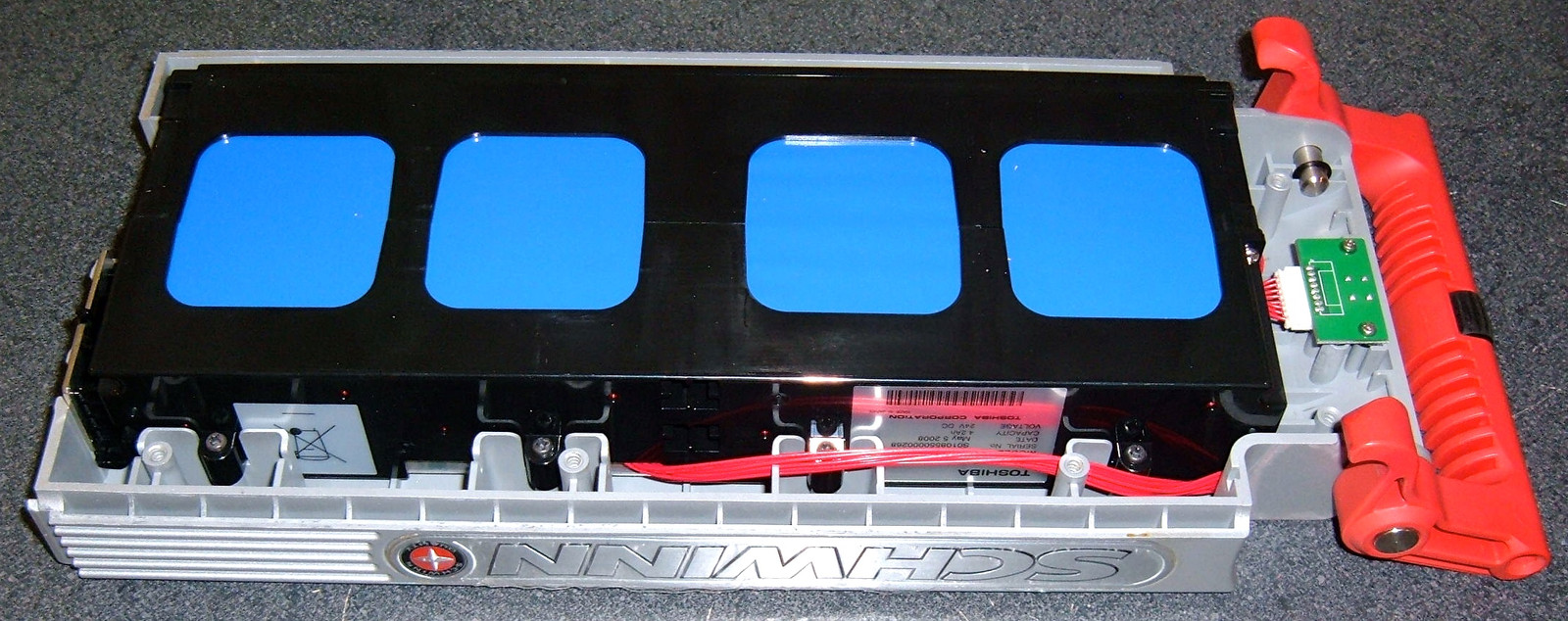
Why did they go with this system? It doesn’t make much sense to me for an electric bike - the focus on fast charging and a high power density chemistry on a bike that really doesn’t need much power is hard to understand. The only thing I can think is that they hoped it would become a delivery fleet bike or something - but a decent delivery rider would absolutely smoke this bike in any terrain. So that doesn’t make sense either. It makes sense, if you’re Toshiba and want to advertise this fancy battery chemistry you’re gearing up to produce, though.
The motor can draw over 200 watts at peak output, so the battery pack is good for less than half an hour of full assist before it’s stone dead. Fortunately, it doesn’t run at full assist all the time.
Charging
To charge the battery pack, you have to take it out of the bike. It comes out easily, but this is quite annoying, given that you charge the bike pretty much every time you ride it (or, at least, you will be, with this small a pack).
Fortunately, if you care about such things, the battery pack charges quickly. The “slow” home charger charges it in about half an hour (8.4A charger, 4AH pack), and I hear that the fast charger can charge it in about 10 minutes. That said, I’ve never seen a picture of the fast charger, and am not entirely convinced they actually exist. Please let me know if you have one or have a picture of one!
If you need to bring the pack inside to charge, you’ll love this setup. It slides right out, and has a nice handle to carry it. It’s not particularly heavy, either.
Why you’d need to fast charge an electric bike is another story entirely. I’m not convinced this is worth much of anything, especially when it comes with a tiny battery capacity. I’d much rather have a large, long range, slow charging pack than a tiny, short range, fast charging pack. Especially when the charger is so darn heavy!
On the plus side, the pack should be good for something like 10,000 cycles. Based on the spec sheets.
Why does this bike exist?
I don’t know.
It got a lot of positive press for Schwinn and Toshiba, but it’s not a very good electric bike. Even when it came out, the 350W BionX packs were setting a standard, and this bike missed it - badly.
It’s a heavy city cruiser with a little bit of power bolted on, driven by a battery pack that makes no sense except as a way to gather press for a particular type of battery.
The SCiB batteries are power dense, charge insanely fast, are proprietary and un-obtainable by normal people, and just don’t make sense for an electric bicycle.
The fast charging capability makes it seem like it was focused on fleet use, perhaps for urban delivery. But it’s just not a good bike for this - it’s heavy and slow. A delivery rider with a decent bicycle would just dominate this thing in all terrain, hill or not, and if they did want an electric assist, they’d probably go with something torque sensing and powerful, like a BionX system.
There are a lot of good ideas on this bike, but it still feels more like a bike designed by a committee that was told, “Build an electric bike so we can get some great press!” than a group that actually understood electric bikes, or even had a real mission for this bike.
Should you buy one?
Ah. This is a good question. Maybe. Even though I don’t like it, it’s got a major redeeming factor.
Right now (Sep 2015), they’re available for $300 with dead batteries on eBay.
If you buy one, you’ll almost certainly have to bypass the BMS. If this doesn’t intimidate you, you live in the flatlands, and you don’t mind the style and riding position of a bolt upright bike, then go for it. $350 plus a bit of time and effort for a working 250W ebike is an amazing deal. Throw some bags on the rear, and you’ve got a great little flatland bike for grocery runs or potting around your retirement community.
If you live anywhere with hills, though, forget it. Get something better.
Oh, and don’t expect a single bit of support from Schwinn or Toshiba. I’ve tried. Neither one wants anything to do with this bike anymore, and they won’t help you a single bit. They’ve entirely abandoned it. You are fully on your own.
But, another thing to consider is that the Shimano Nexus 8 with Roller Brake retails for around $250 alone - so if you want one, this one comes with a whole 700C based electric bike attached! Throw a better battery and a better controller on it, and I bet you can get a whole lot more than 250W out of the motor as well. Not something I’m going to bother with, though.
Final Thoughts
I’ve been riding this bike for a while, trying to get an idea of what it is and what it likes to do.
Seattle is definitely not the place for it - it struggles badly with hills.
That said, I love the mostly sealed chainline and rear hub.
But… in 2015, it’s just not very good.
Schwinn tried for something. If their goal was a lot of media coverage for them and, more importantly, Toshiba, they succeeded. But if their goal was to build a good bike, I think they failed.
Comments
Comments are handled on my Discourse forum - you'll need to create an account there to post comments.If you've found this post useful, insightful, or informative, why not support me on Ko-fi? And if you'd like to be notified of new posts (I post every two weeks), you can follow my blog via email! Of course, if you like RSS, I support that too.
